Case Closed
Hard and Soft Shell Vintage Instrument Cases For Martin Guitars
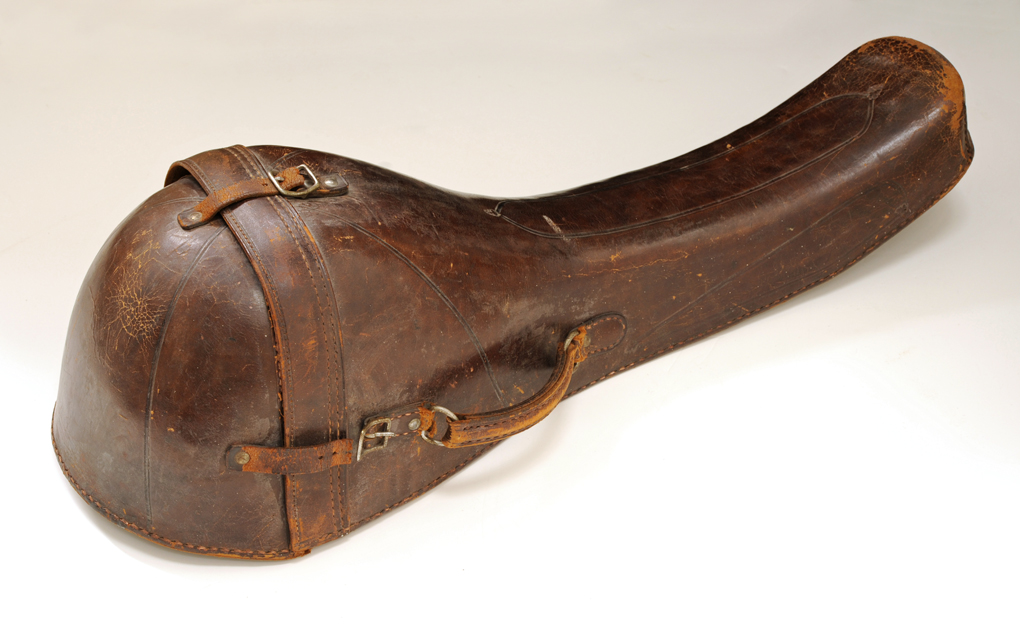
I hear often that Martin did not supply cases for their guitars, but rather the dealers supplied independently sourced cases that varied in different parts of the country depending on the availability from wholesalers in different regions.
In truth, Martin has always sold cases with their guitars.
In the 19th Century, Martins were shipped in poplar "coffin cases" which were built in the Martin factory and included in the price of the guitar.
Beginning in the 1920's, Martin began to offer a choice of hard and soft shell "Geib style" black "Tolex" cases most often manufactured by the Harptone Company and available as an option at extra charge. While these cases were not labeled with the Martin name, they were listed in the Martin catalogs and price lists, and had Martin hang tags, at least when purchased separately.
While most dealers purchased guitars from Martin with cases, as did most individuals, no one was forced to buy their cases from Martin, and some West coast dealers or distributors did purchase aftermarket cases for their guitars during the "folk boom" of the 1960's.
Martin introduced molded thermoplastic cases in 1971. In late 1972, at the same time Martin's lifetime warranty was replaced with a 5 year warranty, the company began including the case in the purchase price of the guitar for the first time since Martin guitars were shipped in coffin cases.
Perhaps the myth that Martin did not supply cases is so hard to put to rest because so many Martins are seen on the "used" market today with varying styles of cases manufactured in the same general period as the guitar. There is one additional explanation:
Historically, most style 18 Martins have been purchased with soft shell cases, including a D-18 that we would never think of putting in anything but a hard shell case today. So most Style 18 guitars were brought back to the dealer later, after the soft shell cases had fallen apart, where the dealer often matched them with the independently sourced hard shell cases that we see these guitars with today, and assume to be "original" cases.
Coffin Cases
In the earliest years, Martin shipped guitars to their distributor by stage coach in their poplar, felt lined "Coffin" style cases, which were constructed by Martin, and many of these cases are still affixed with remnants of shipping labels and wax seals.
Learn more about coffin cases.
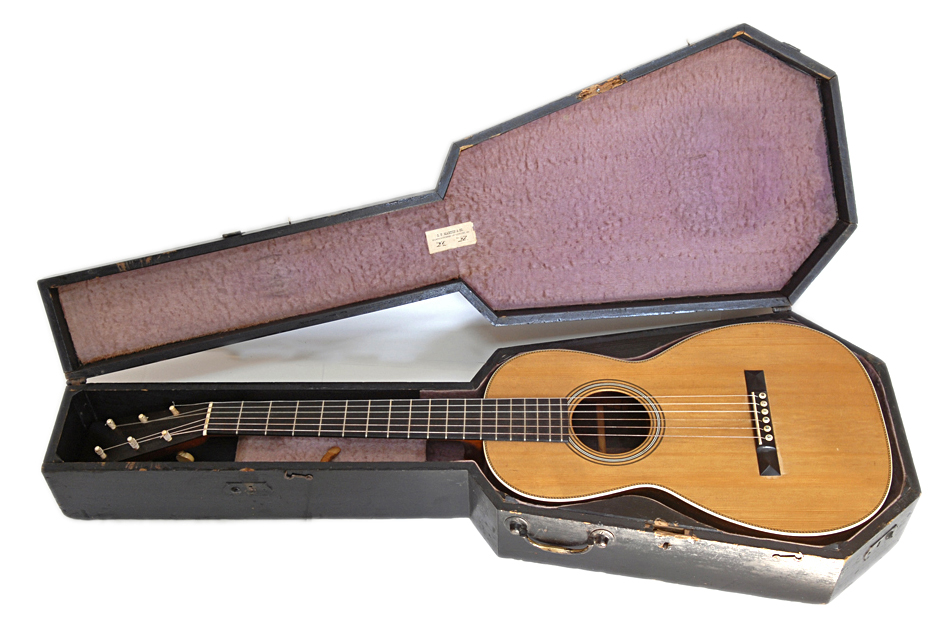
Leather Cases
Around the turn of the century, coffin cases were replaced with hand tooled leather cases, or canvas cases for the less expensive models.
This would mark the beginning of the long association between Martin and the company that would later become "Harptone", the first iteration of which would be marked by the symbol of the bull with the letters "M&W, for "Maulbetsch & Whittemore".
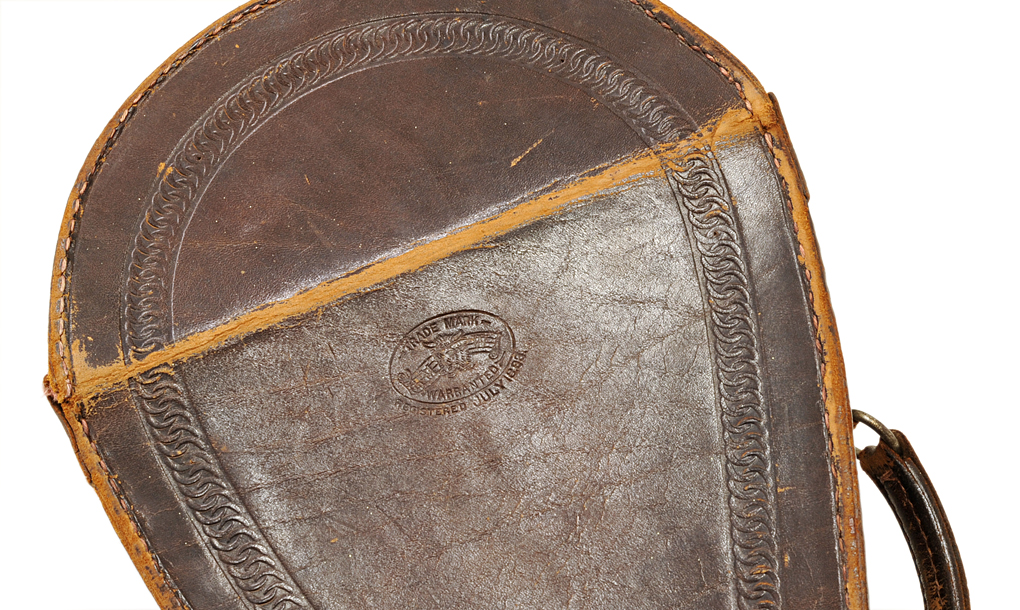
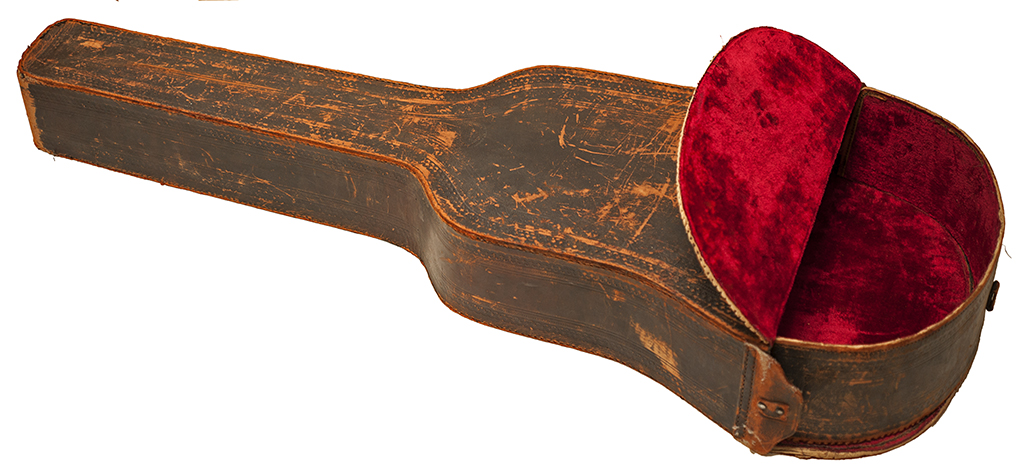
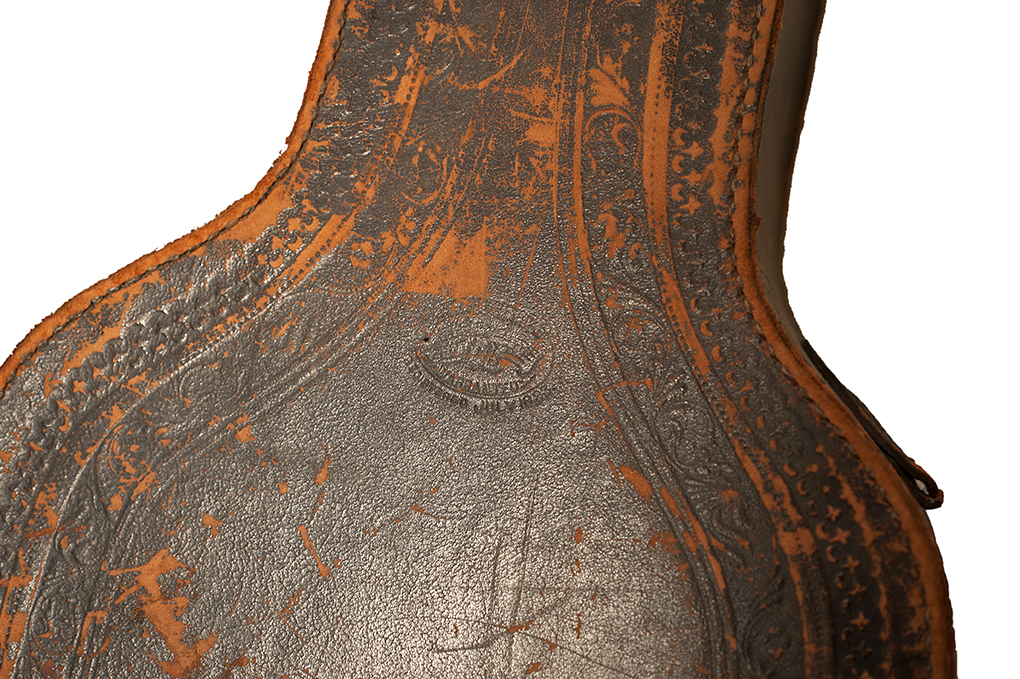
Canvas Cases
Canvas cases for Martin guitars, ukuleles, and mandolins were made in both soft and stiff shell styles.
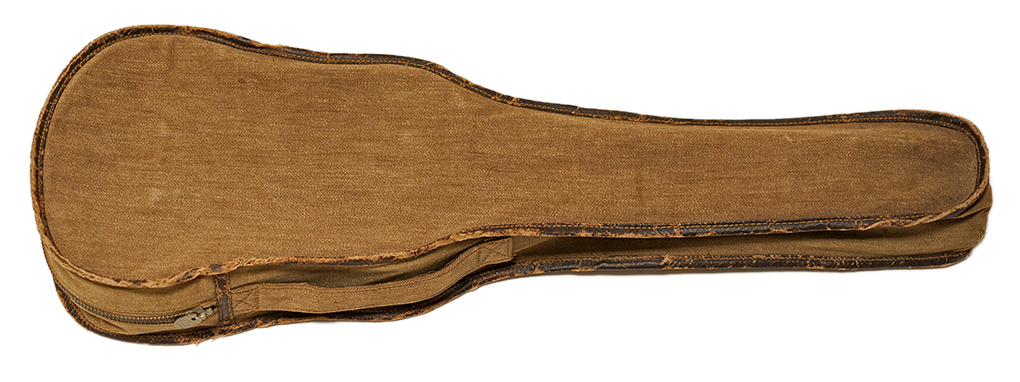
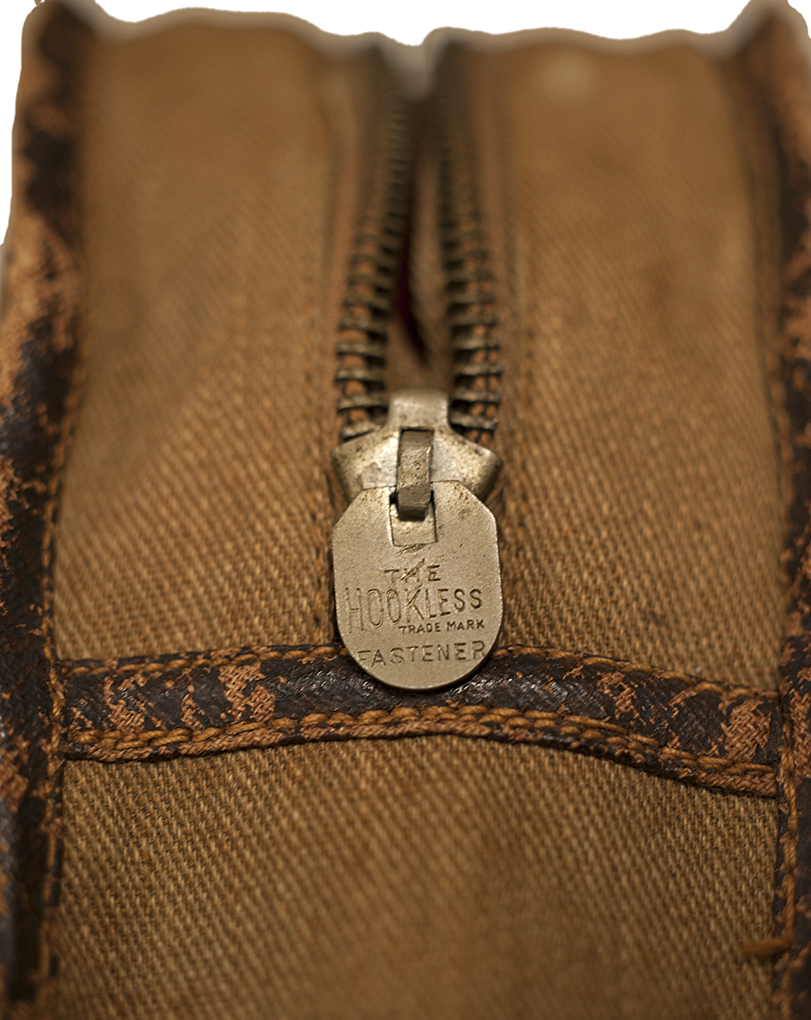
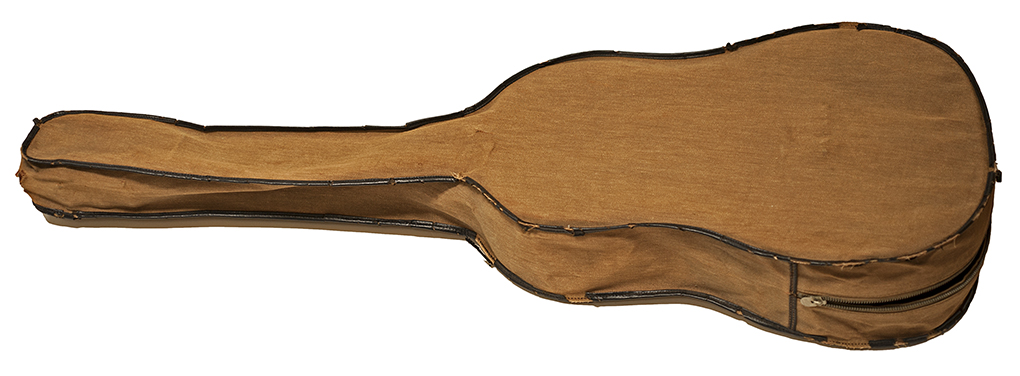
The stiff canvas end loaded cases, sometimes referred to as "bottom dumpers", left too many instruments in pieces on the street.
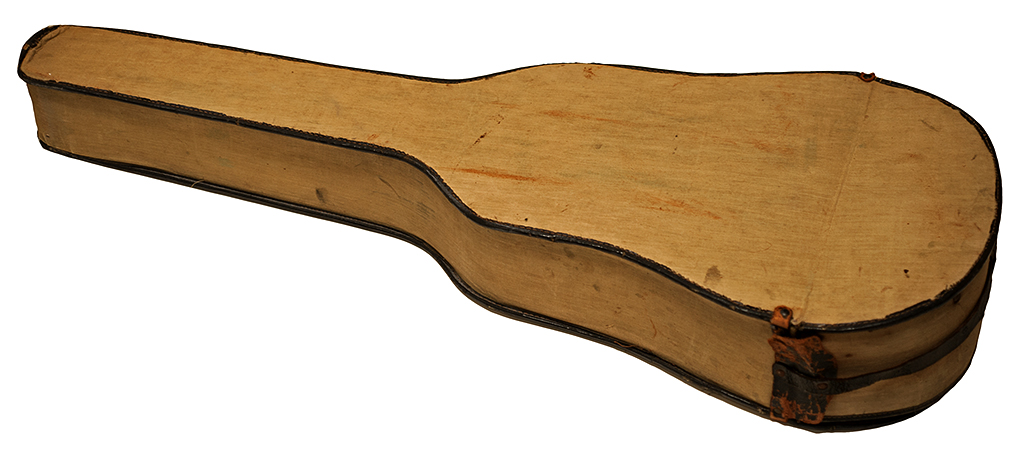
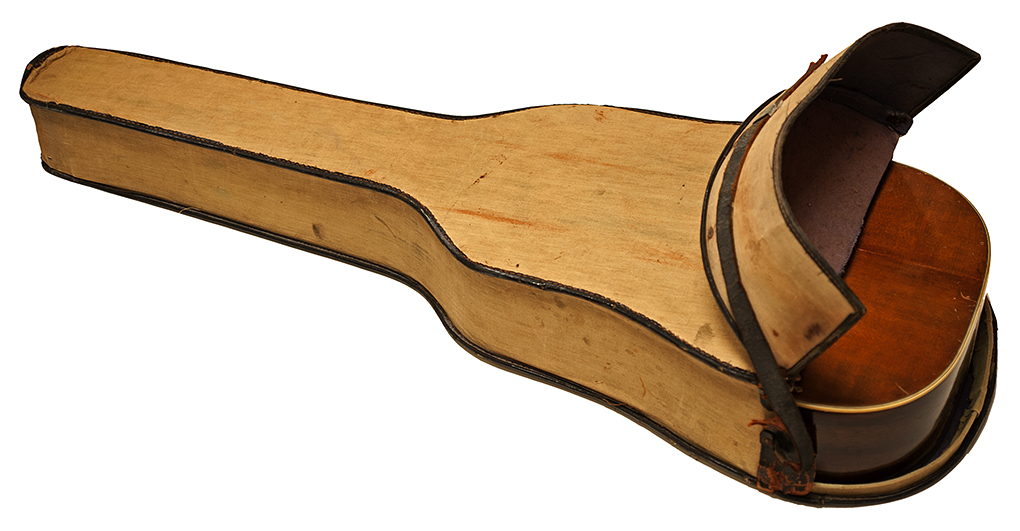
This case has the "LHC" Lyon & Healy logo, with a "C" which could stand for "Company", but I suspect stands for "Lyon and Healy, Chicago".
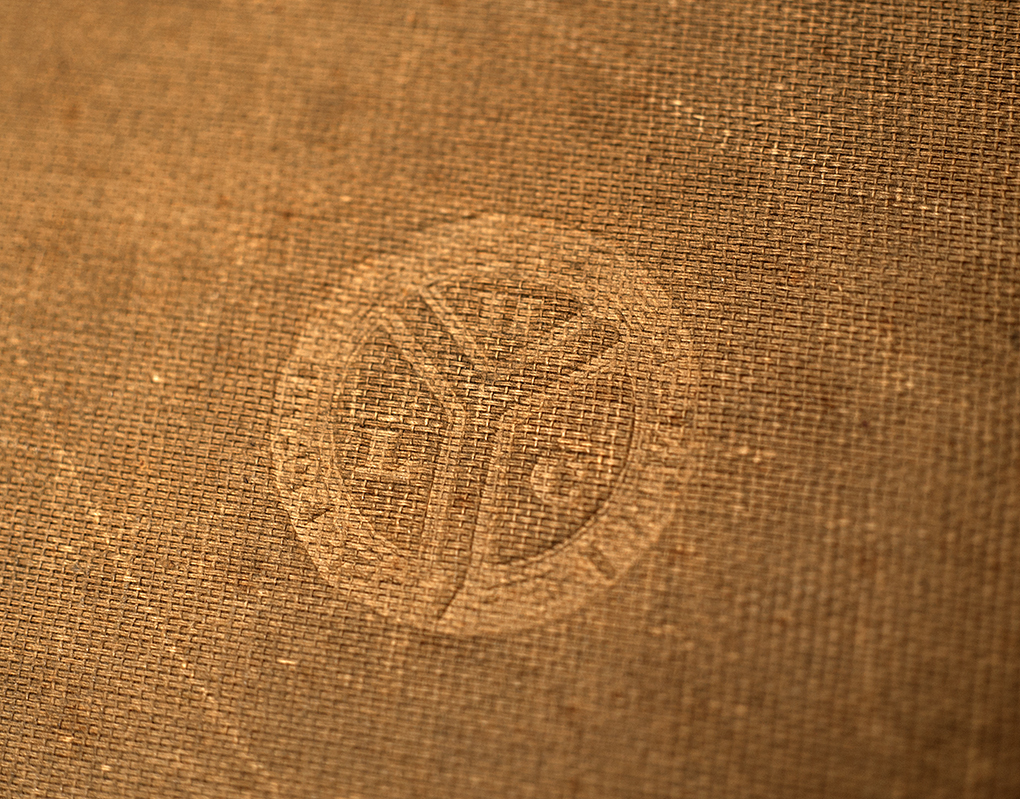
Starting in the 1920's, cases became an option listed in Martin's price lists, with Martin usually offering a choice of one or two quality levels of hard shell cases, and one soft shell case in each size made by the Felsberg Company, the second iteration of the company later to be known as "Harptone".
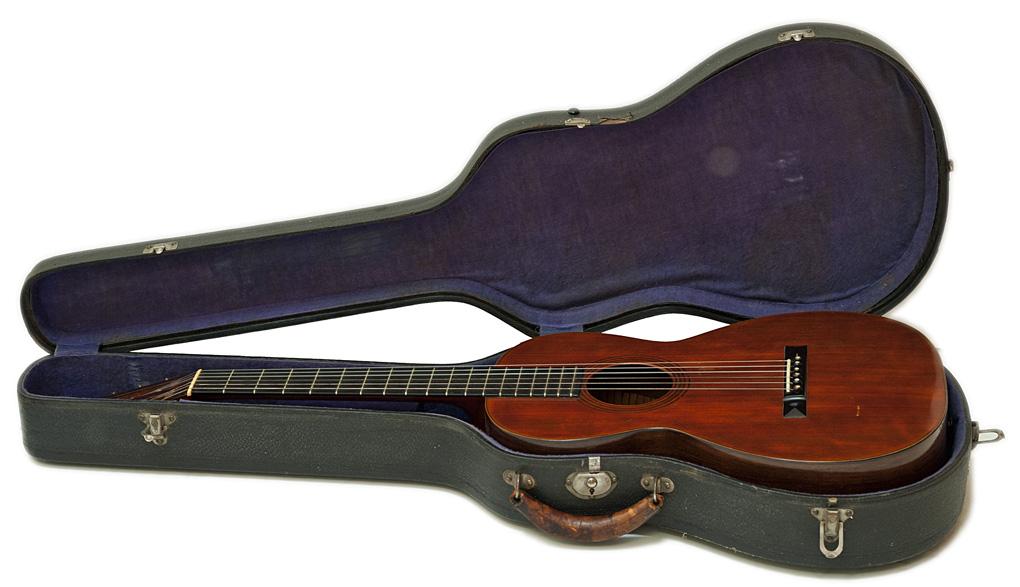
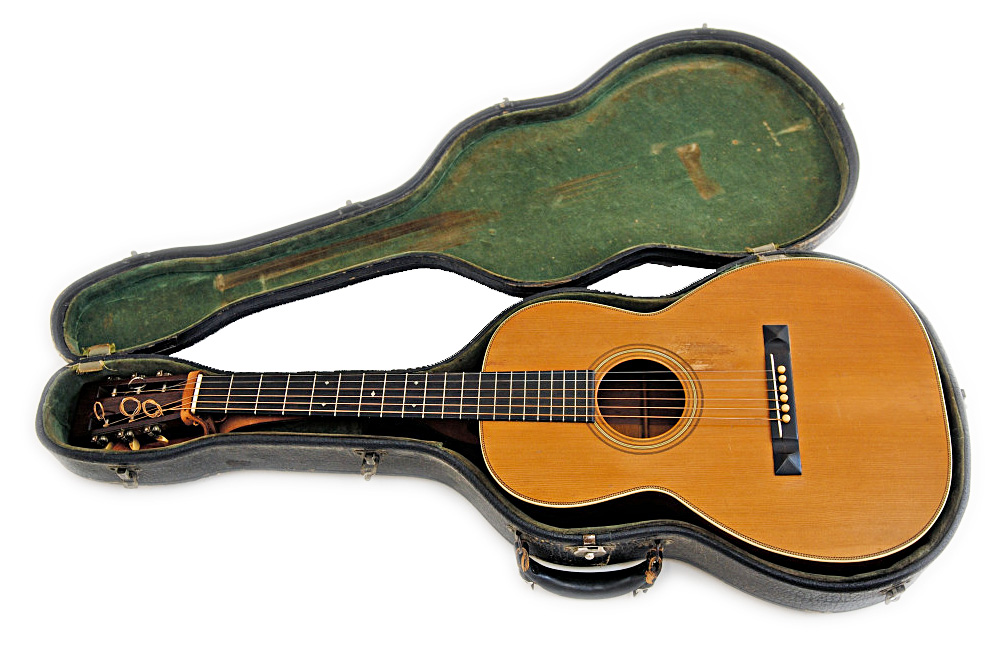
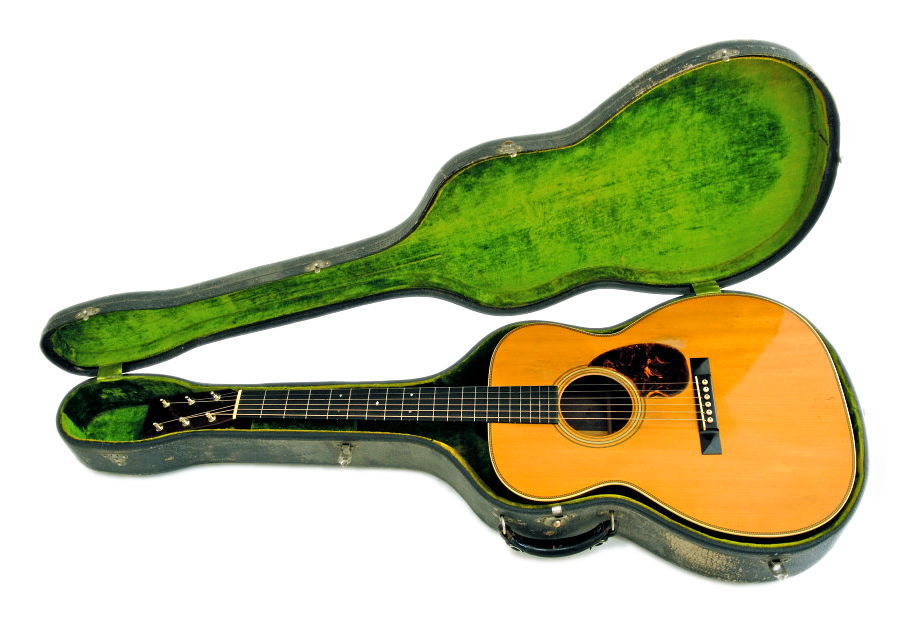
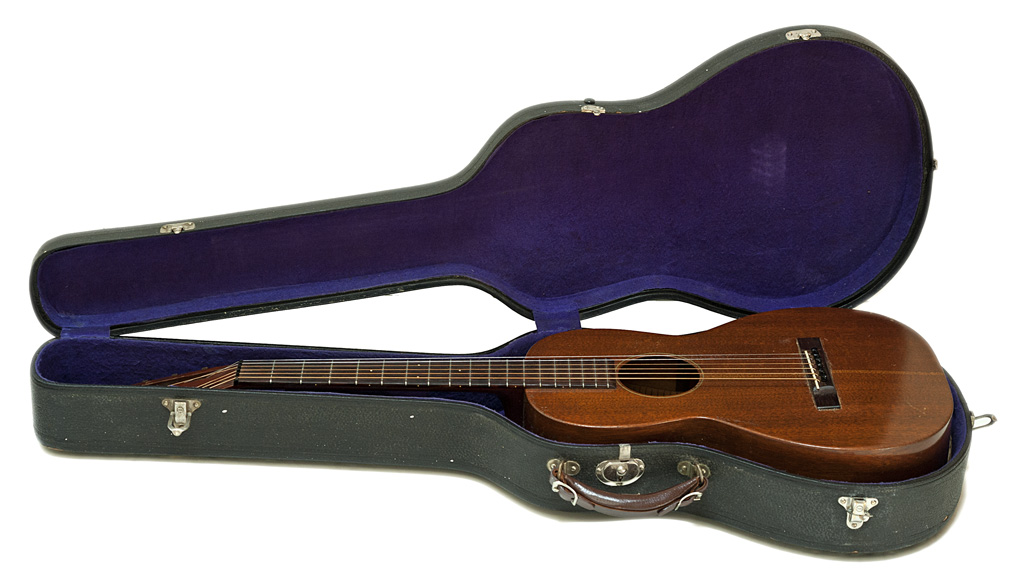
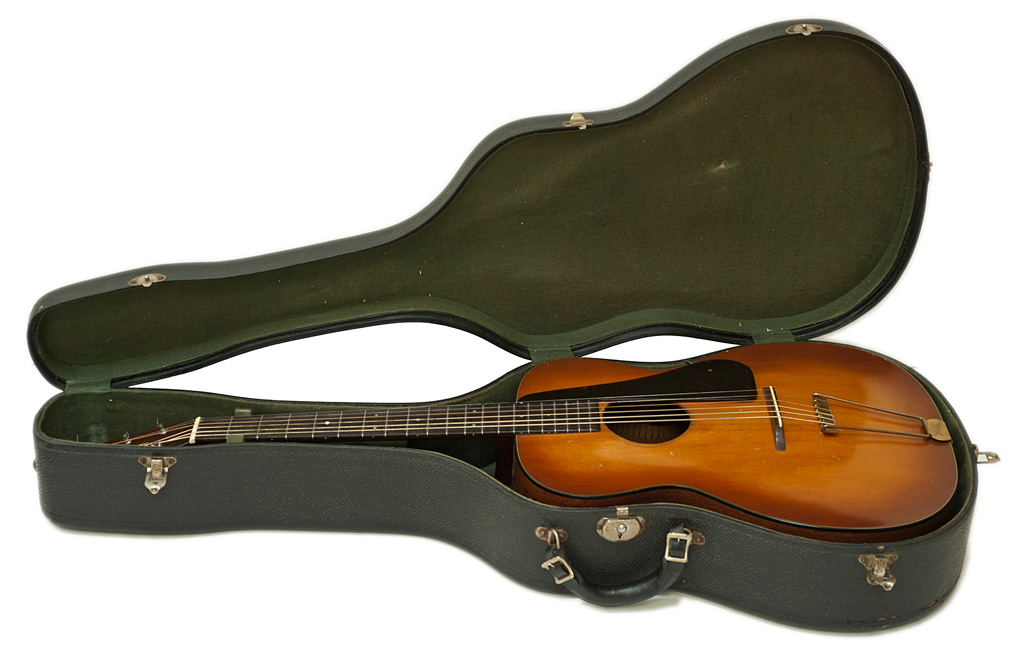
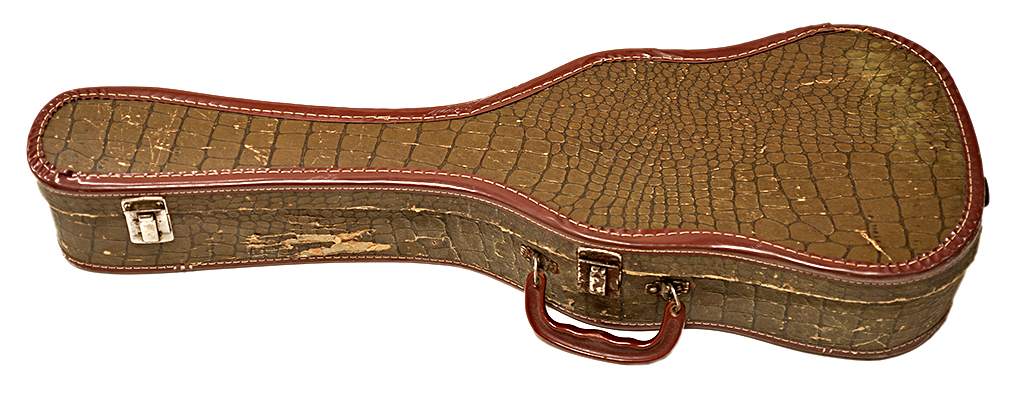
Geib & Schaeffer Co. / Geib Inc. Soft Shell Cases
"Geib & Schaeffer" or "G&S" would adopt the name "Geib Inc." in 1937.
Geib & Schaeffer Soft Shell cases were made with the Challenge, Puritan, and Arch Kraft imprints.
A
Summary of G&S TRADEMARKS taken from the Music Trade
Review:
G&S Co. KANTKRACK trademark (introduced in 1923/24) - A Geib & Schaefer original method – made by our special patented process and may be claimed as a composition material. KantKrack Cases are made of several thicknesses of fabric treated with certain chemicals and baked into shape under high pressure. The result is a seamless, practically unbreakable Case which far surpasses the veneer Case in neatness and general durability. It is impossible to speak too highly of the KantKrack line.
G&S QUALITY Canvas trademark 2/27
G&S Co. MASTERKRAFT trademark 2/27 - Three-Ply Veneer, thoroughly seasoned basswood shaped in the most artistic designs, a construction of durability, covered with the very best Keratols in beautiful grains of Seal and Walrus. Our MasterKraft Cases are in a class of their own.
G&S Co. UTILITY trademark 2/27 - Constructed for rough wear, made of heady Chipboard, reinforced sides, covered with waterproof Keratol top and bottom, edges reinforced with leather, double sewed, locked stitch. Impossible to unravel, making a rigid case.
Cases are all the name implies. We use a very heavy grade of strawboard covered with a fine quality canvas, heavy fleeced lined, edges are bound with Keratol, leather handle and trimmings.
G&S Co. DURABILT trade mark (introduced October 1928) - Constructed over our KantKrack process, molded into perfect designs, is seamless and very durable, but less expensive than our regular KantKrack. DuraBilt Cases are always uniform. (In spite of this marketing description, many cases stamped DuraBilt seem to be wood veneer construction rather than the KantKrack process.)
G&S Co. COM-PO trademark (introduced Nov. 24, 1928) - Constructed by our patented process to compete with imported cases. Made of special composition material. Covered with waterproof material, nickel clasps and leather handle, pebbled grain covering.
G&S Co. CHALLENGE trademark (introduced Nov. 24, 1928) - An inexpensive side-opening case, defying all competition. Made of laminated Chipboard, covered with waterproof material, nicely grained, Keratol bound edges, chain stitched, leather handle, nickel clasps.
G&S Co. PURITAN (introduced 1929)
By 1937 – Cases are being stamped “GEIB Inc.”, also Geib medallion begins to be seen on some cases.
Geib ECONOMO trademark (introduced 1948)
Geib VAC-A-BOND trademark, (introduced late 1950’s?) seen in cases for violins, trumpet, trombone, clarinet, French horn, etc. Examples have Geib medallion, aluminum valance, and either medium brown exterior with rust velvet interior, or black exterior with red velvet interior.
Case Linings:
D = DUVETINE LINED (a soft napped velvety fabric)
V = VELVET LINED (short dense pile)
P = PLUSH LINED (longer pile, Rayon)
P = SILK PLUSH (possibly silk but more probably an even longer Rayon pile with “silky” qualities)
G&S Co. KANTKRACK trademark (introduced in 1923/24) - A Geib & Schaefer original method – made by our special patented process and may be claimed as a composition material. KantKrack Cases are made of several thicknesses of fabric treated with certain chemicals and baked into shape under high pressure. The result is a seamless, practically unbreakable Case which far surpasses the veneer Case in neatness and general durability. It is impossible to speak too highly of the KantKrack line.
G&S QUALITY Canvas trademark 2/27
G&S Co. MASTERKRAFT trademark 2/27 - Three-Ply Veneer, thoroughly seasoned basswood shaped in the most artistic designs, a construction of durability, covered with the very best Keratols in beautiful grains of Seal and Walrus. Our MasterKraft Cases are in a class of their own.
G&S Co. UTILITY trademark 2/27 - Constructed for rough wear, made of heady Chipboard, reinforced sides, covered with waterproof Keratol top and bottom, edges reinforced with leather, double sewed, locked stitch. Impossible to unravel, making a rigid case.
Cases are all the name implies. We use a very heavy grade of strawboard covered with a fine quality canvas, heavy fleeced lined, edges are bound with Keratol, leather handle and trimmings.
G&S Co. DURABILT trade mark (introduced October 1928) - Constructed over our KantKrack process, molded into perfect designs, is seamless and very durable, but less expensive than our regular KantKrack. DuraBilt Cases are always uniform. (In spite of this marketing description, many cases stamped DuraBilt seem to be wood veneer construction rather than the KantKrack process.)
G&S Co. COM-PO trademark (introduced Nov. 24, 1928) - Constructed by our patented process to compete with imported cases. Made of special composition material. Covered with waterproof material, nickel clasps and leather handle, pebbled grain covering.
G&S Co. CHALLENGE trademark (introduced Nov. 24, 1928) - An inexpensive side-opening case, defying all competition. Made of laminated Chipboard, covered with waterproof material, nicely grained, Keratol bound edges, chain stitched, leather handle, nickel clasps.
G&S Co. PURITAN (introduced 1929)
By 1937 – Cases are being stamped “GEIB Inc.”, also Geib medallion begins to be seen on some cases.
Geib ECONOMO trademark (introduced 1948)
Geib VAC-A-BOND trademark, (introduced late 1950’s?) seen in cases for violins, trumpet, trombone, clarinet, French horn, etc. Examples have Geib medallion, aluminum valance, and either medium brown exterior with rust velvet interior, or black exterior with red velvet interior.
Case Linings:
D = DUVETINE LINED (a soft napped velvety fabric)
V = VELVET LINED (short dense pile)
P = PLUSH LINED (longer pile, Rayon)
P = SILK PLUSH (possibly silk but more probably an even longer Rayon pile with “silky” qualities)
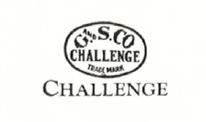
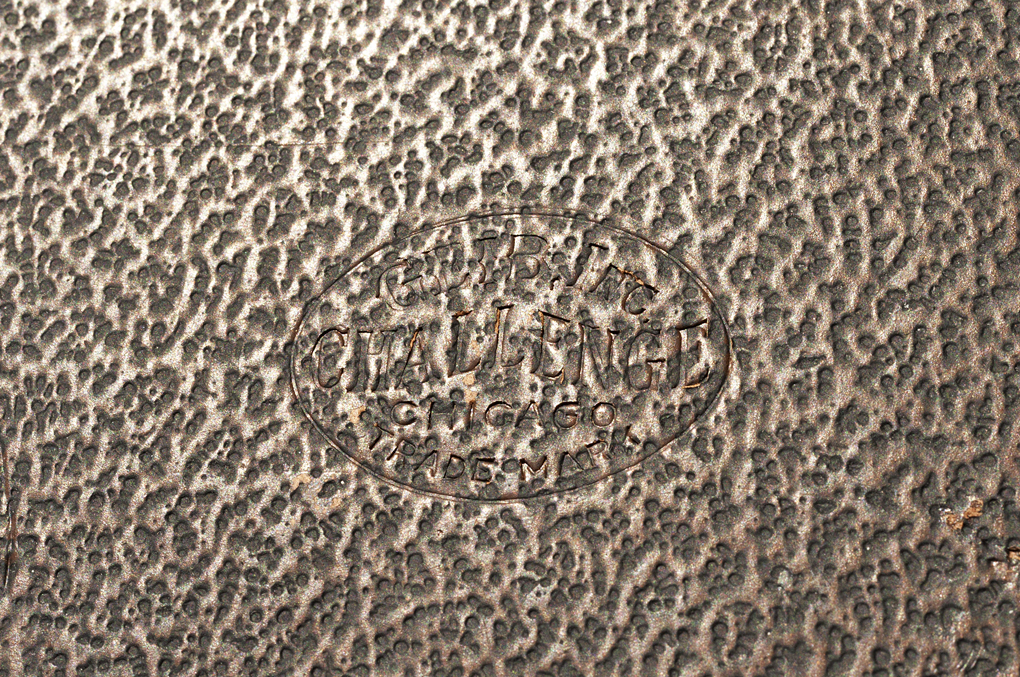
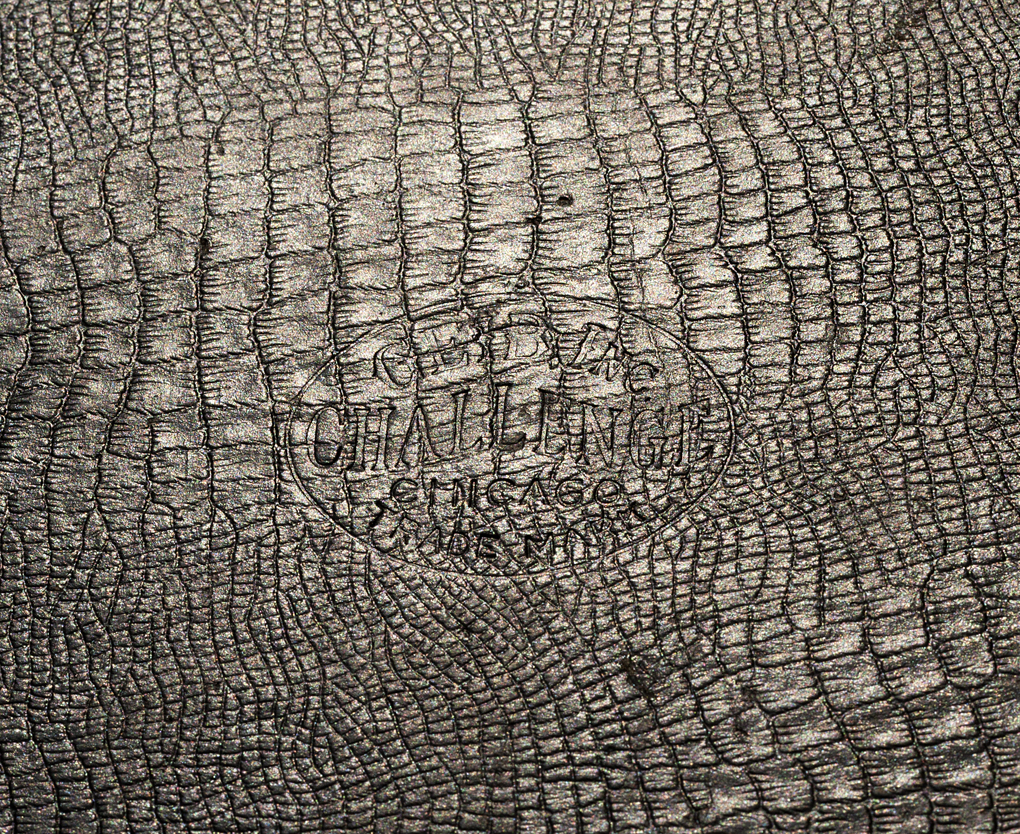

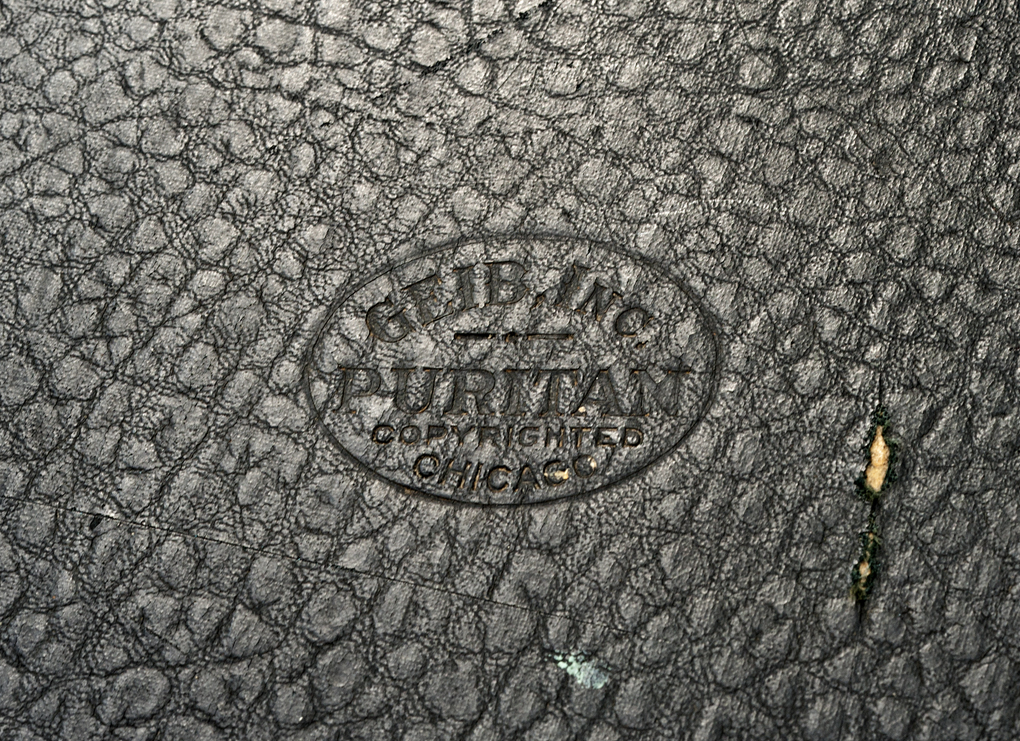
ARCH KRAFT
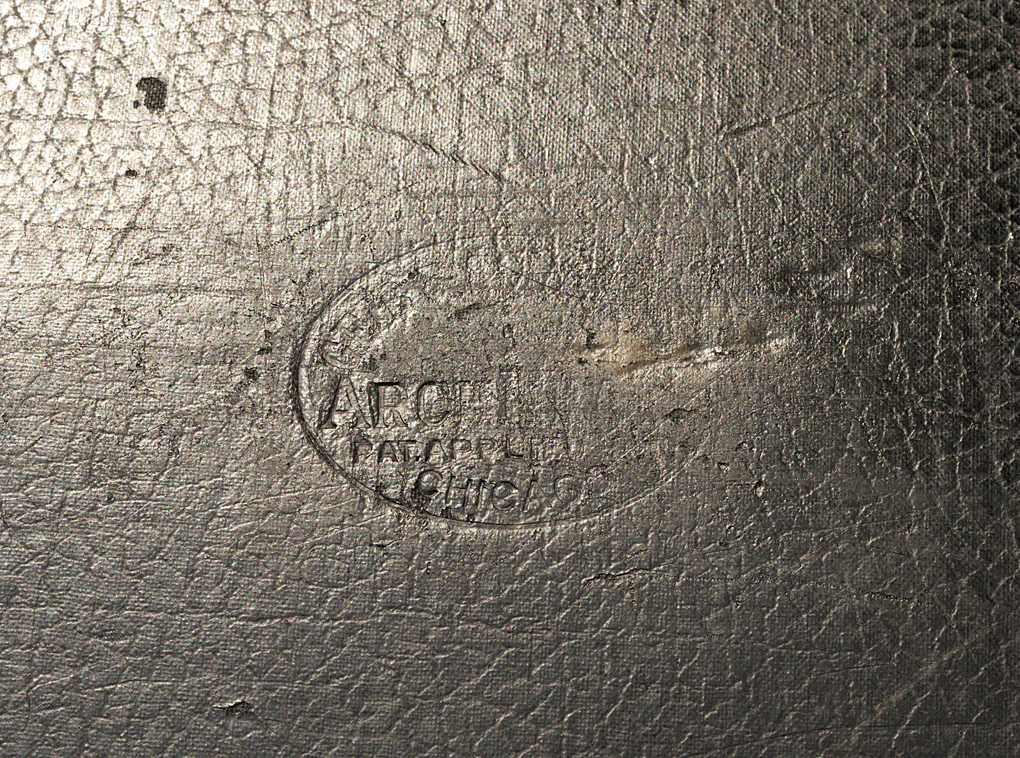
Felsberg / Harptone Soft Shell Cases
Most soft shell cases used by Martin beginning around 1920 are stamped with the symbol of the bull with the letters "FF", for the Felsberg Company, the second iteration of what would later become the Harptone Company, with the letters "B&C" in 1928.
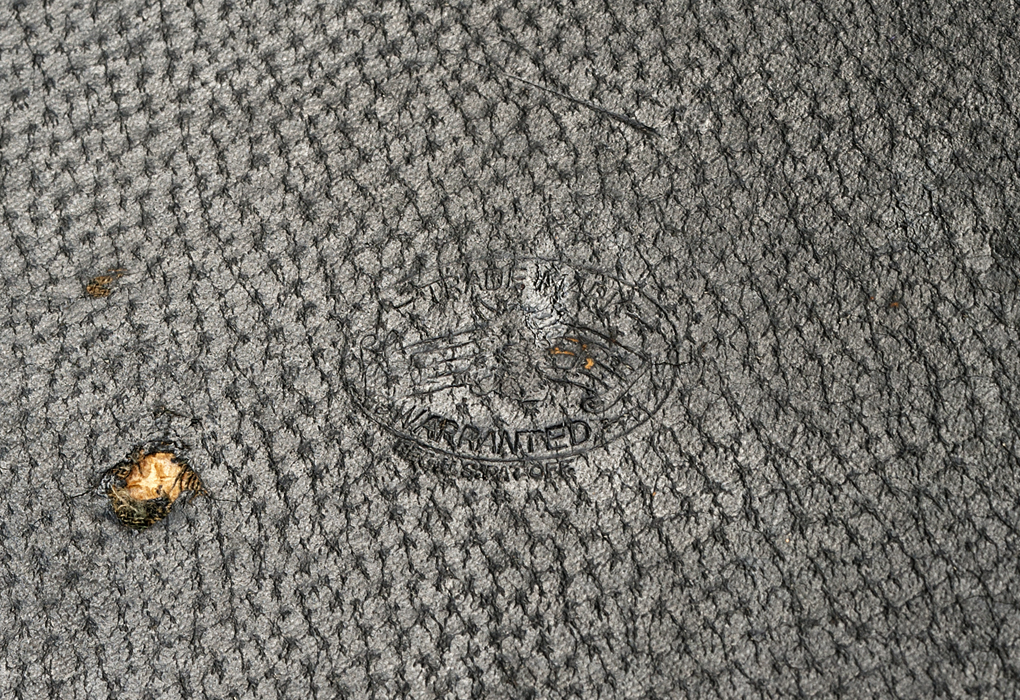
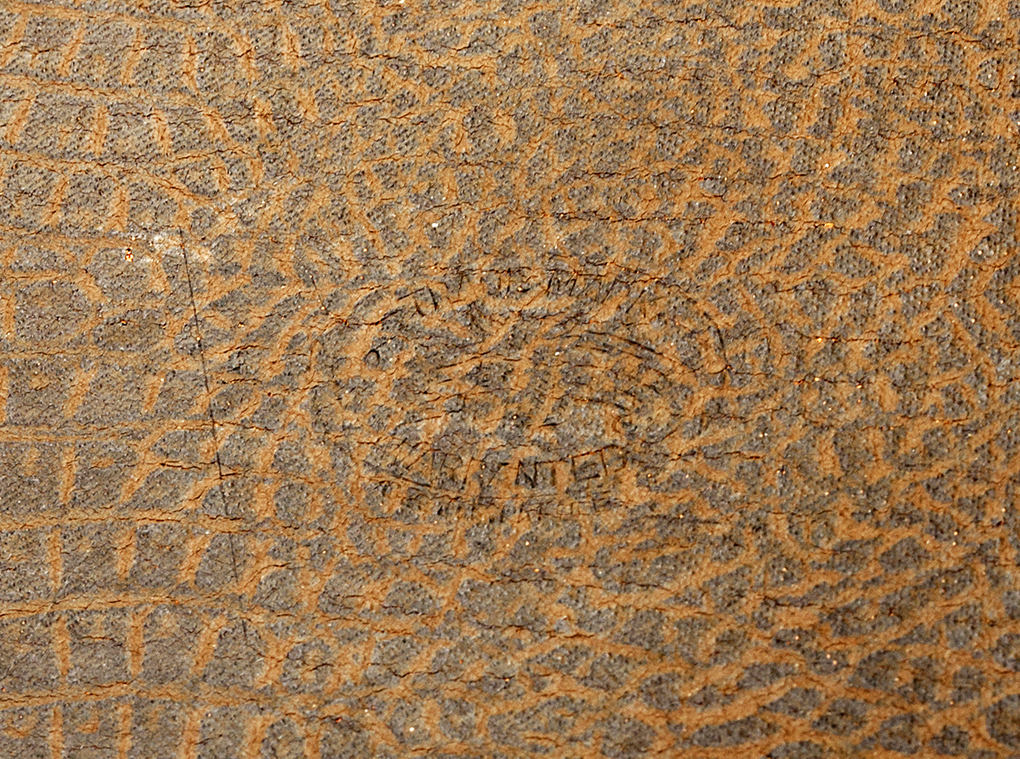
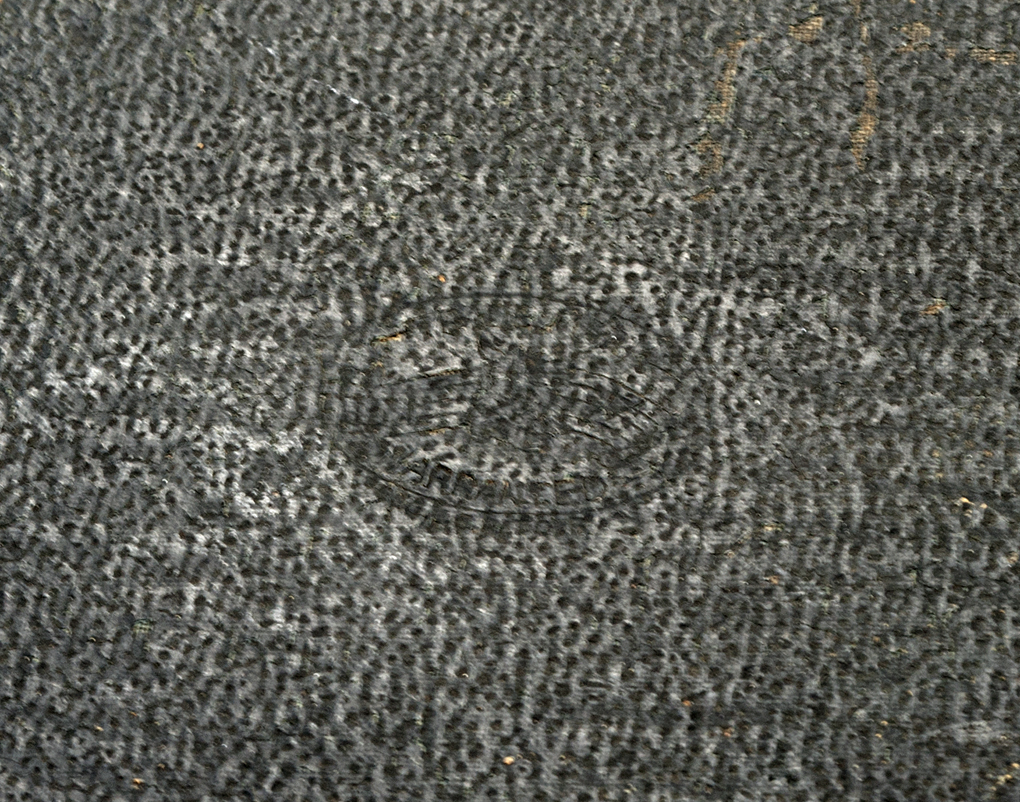
Soft Shell Case Latches
Eagle Lock Co., "USA"
Rounded Top / 3 Piece Base
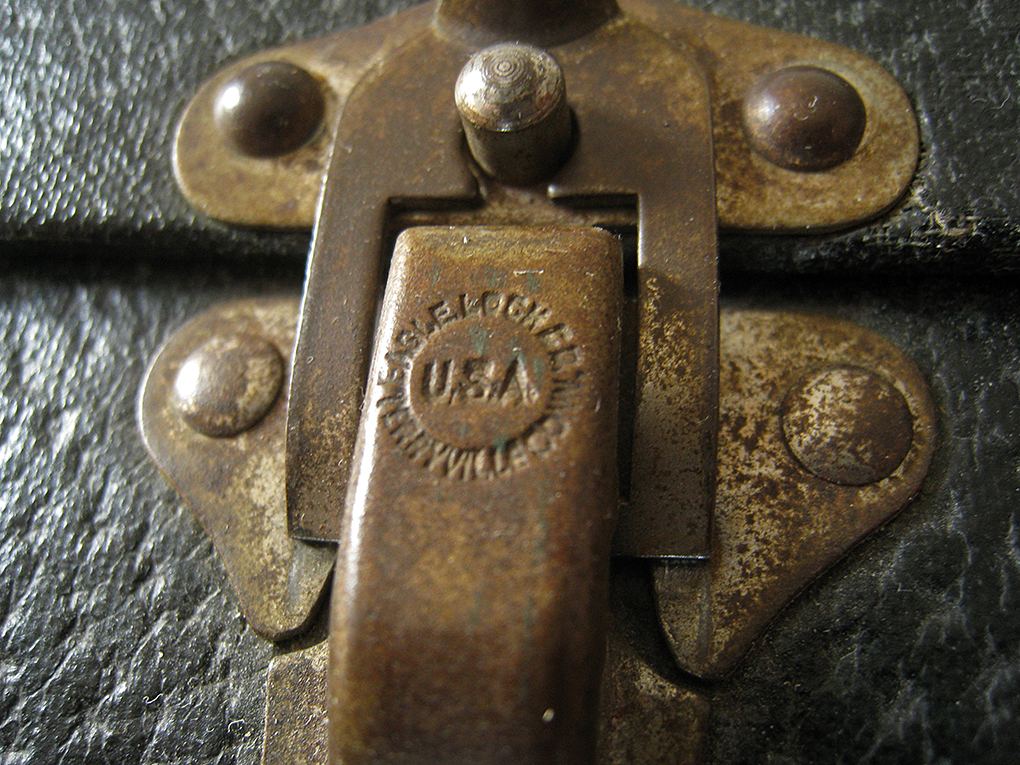
Eagle Lock Co., "USA"
Tall Top / 3 Piece Base
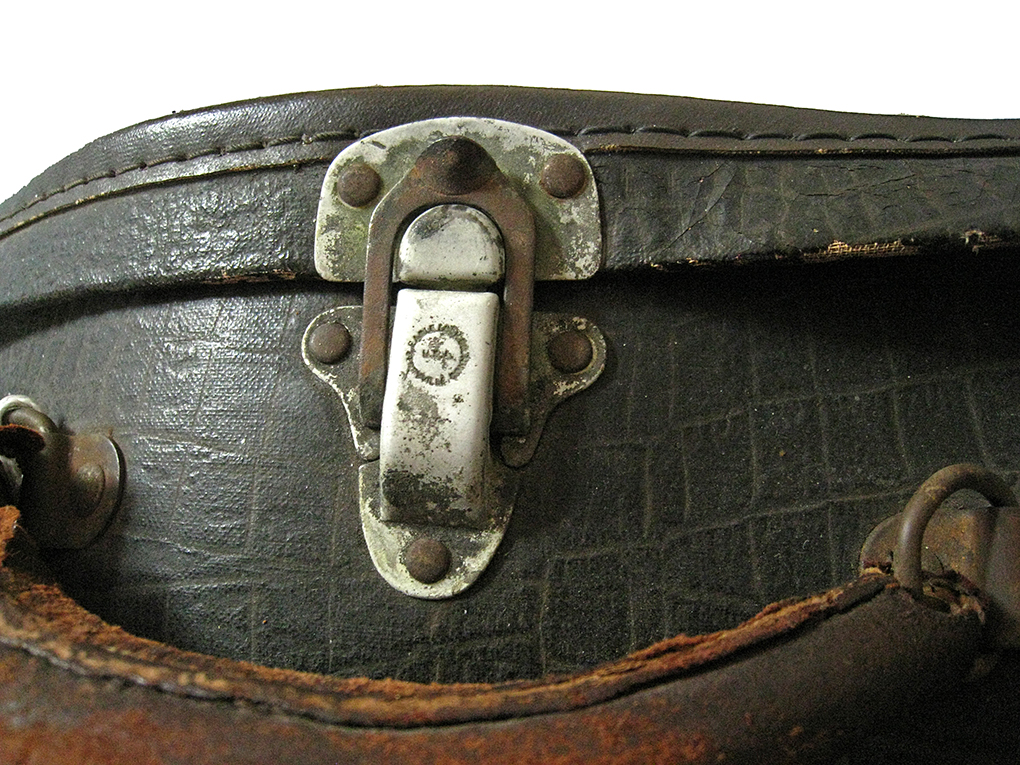
"G&S"
Short Top / 1 Piece Triangular Base
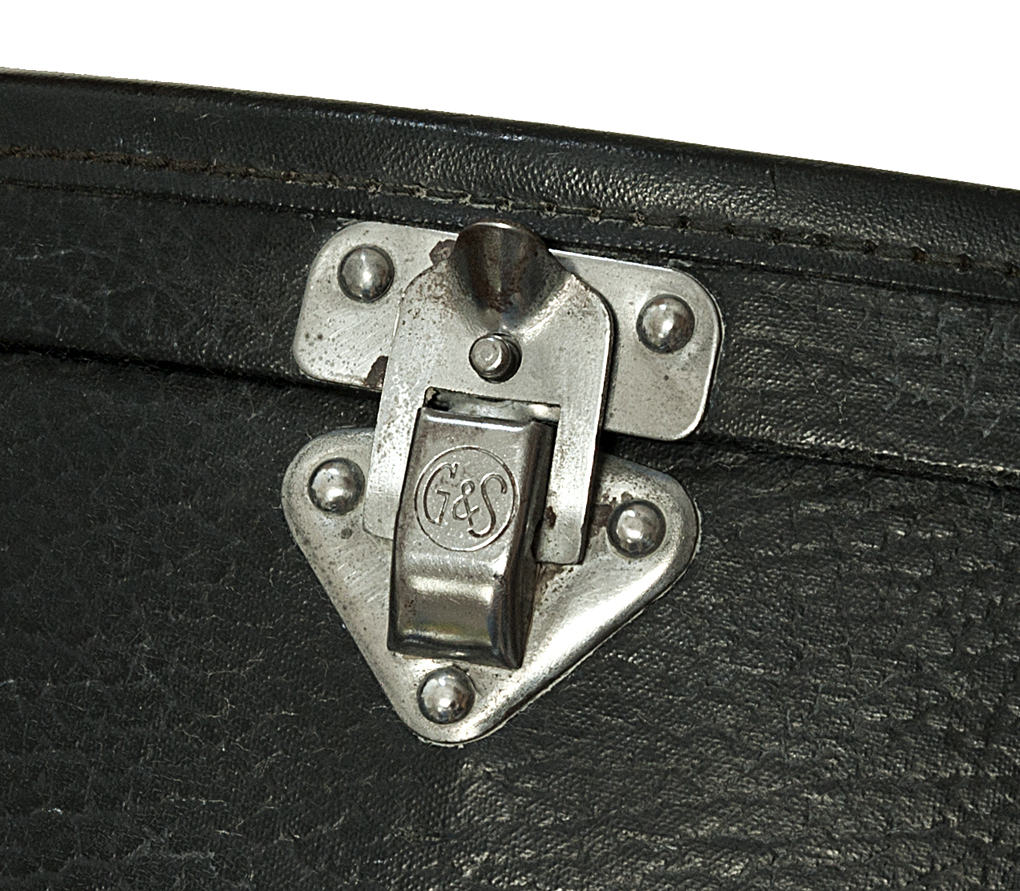
"G"
Short Top / 1 Piece Triangular Base
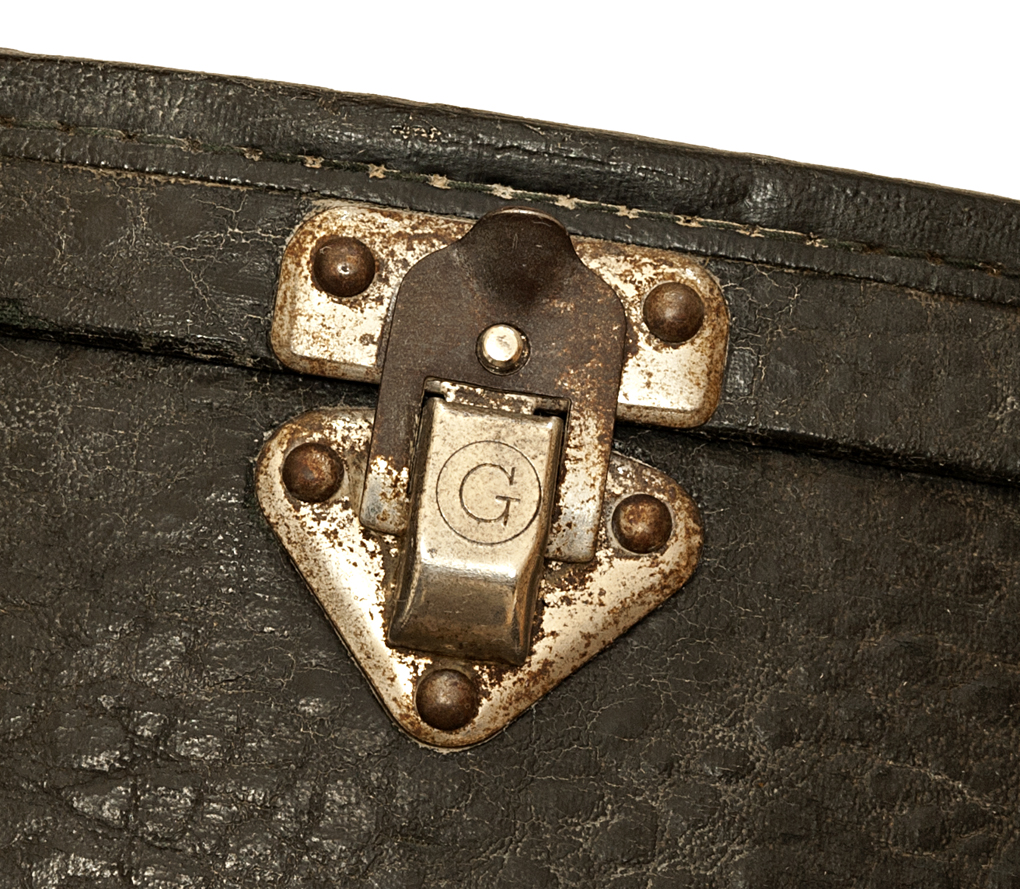
Octagon
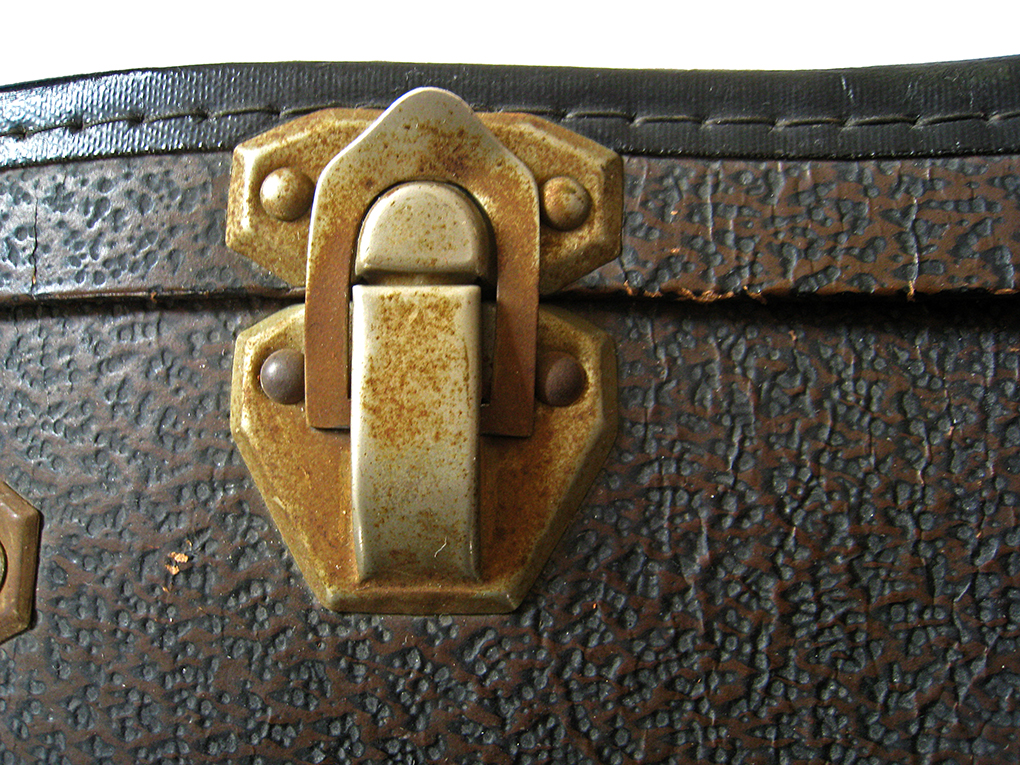
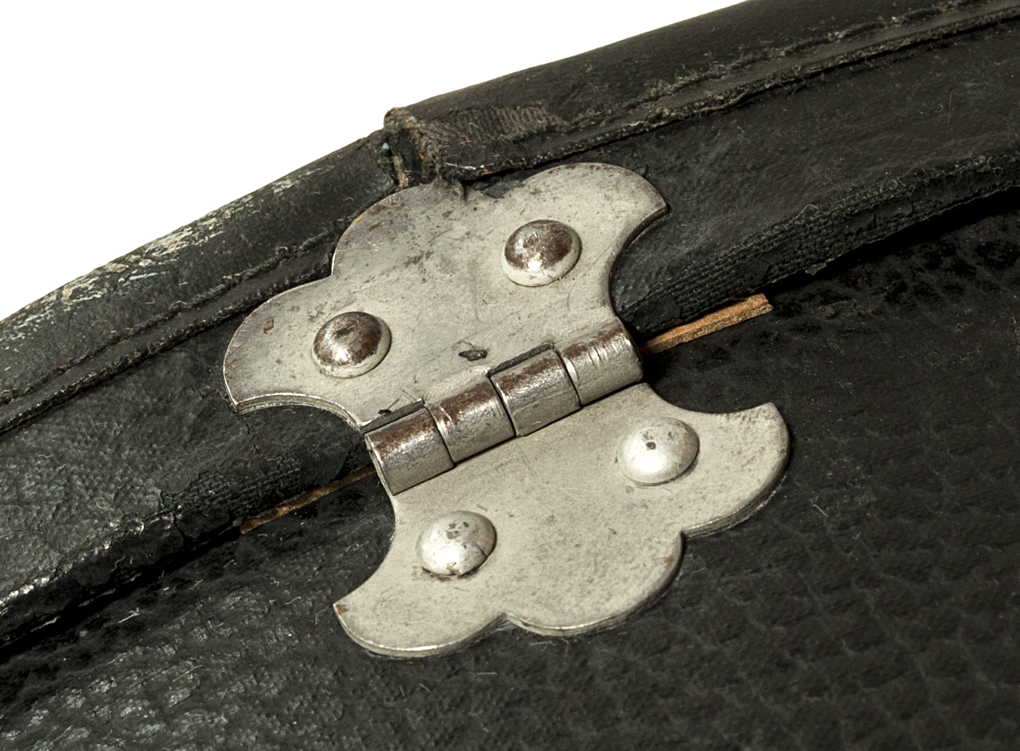
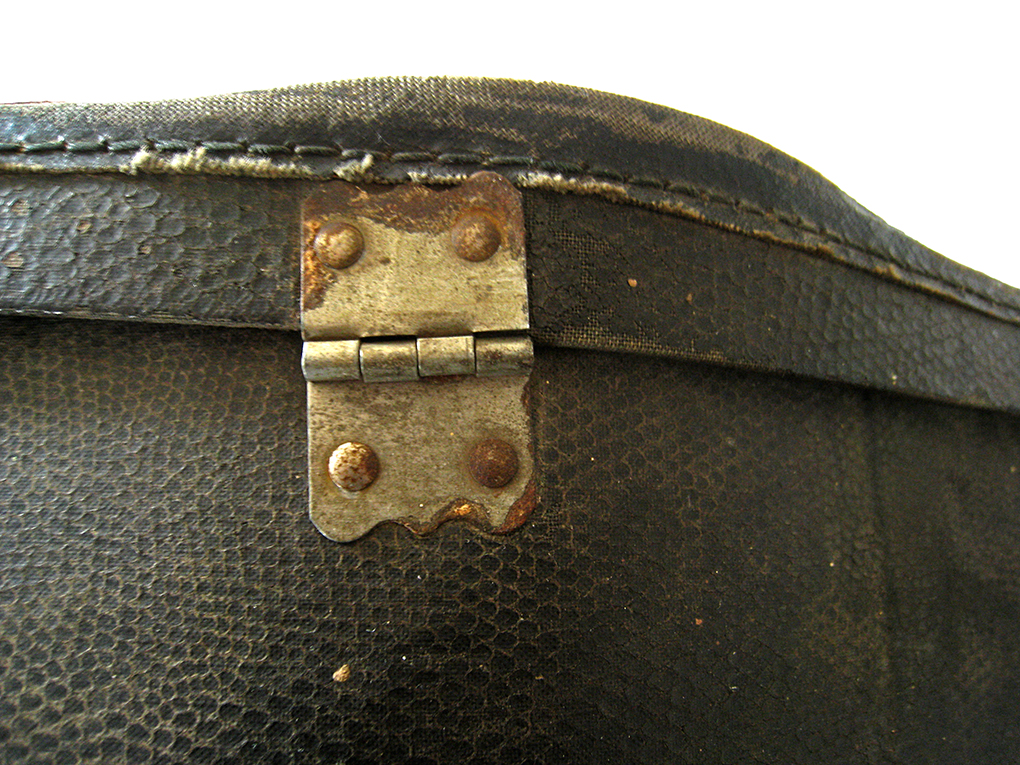
Hexagon
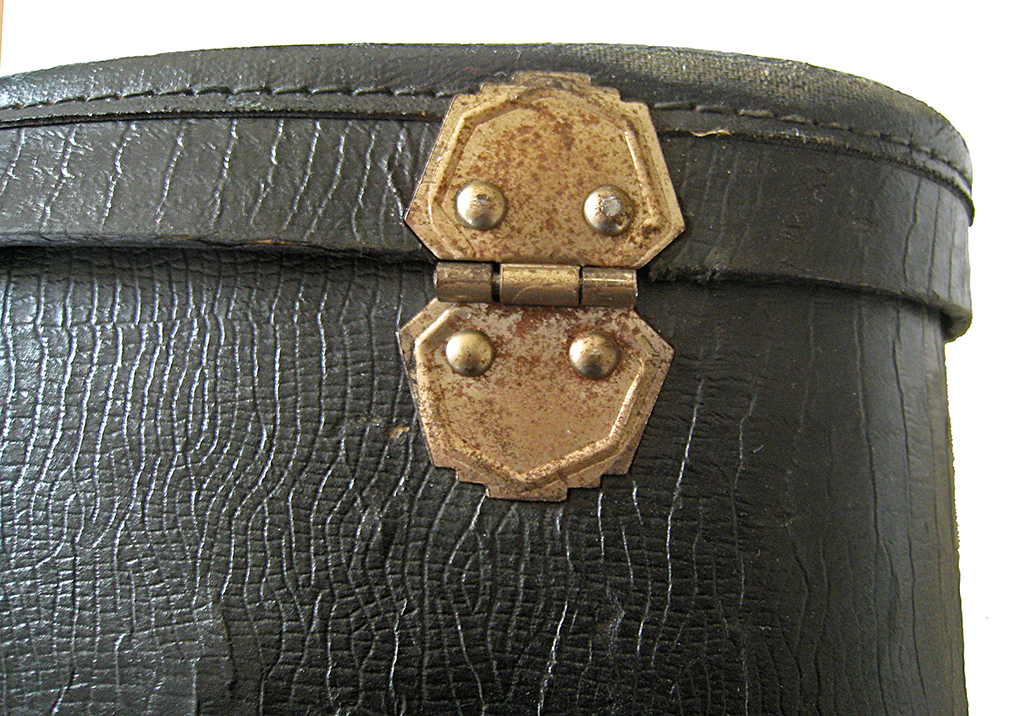
Leather Hinge
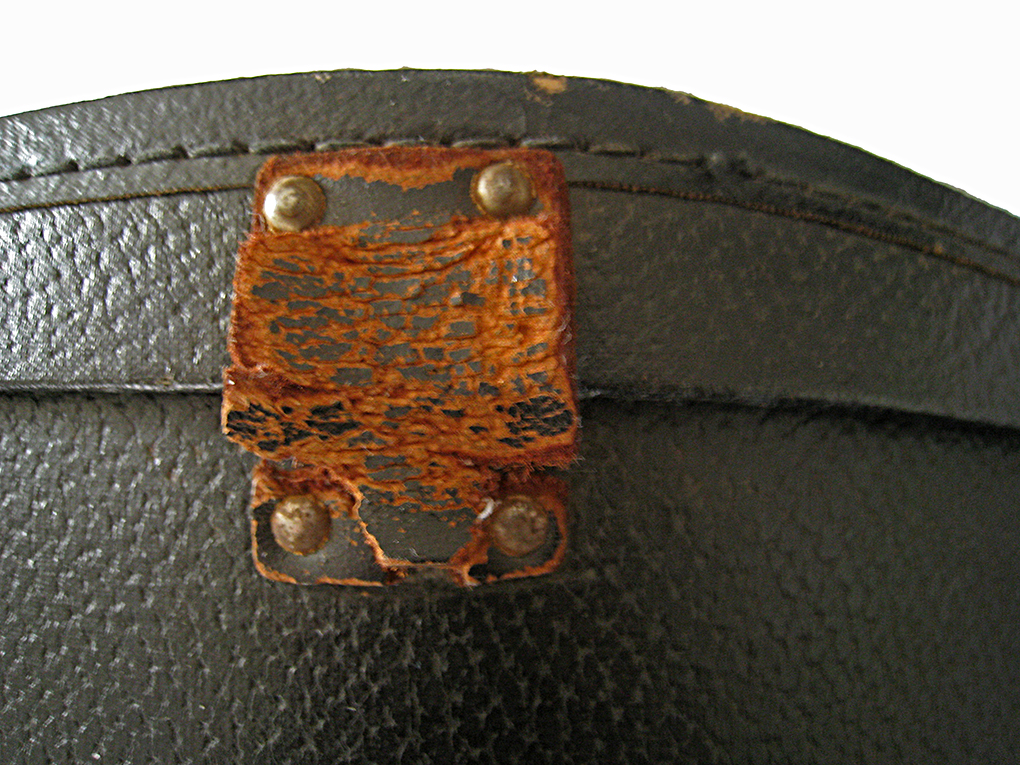
Case Pocket Lid Symbols
A single diamond on the case pocket lid is a symbol of Geib & Schaeffer cases.
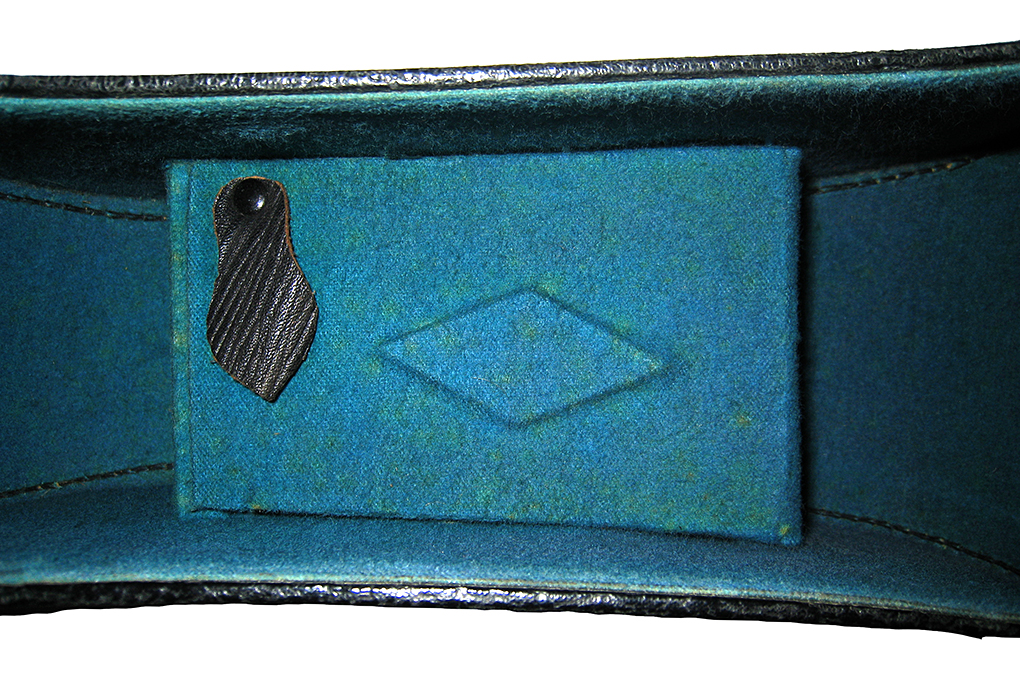
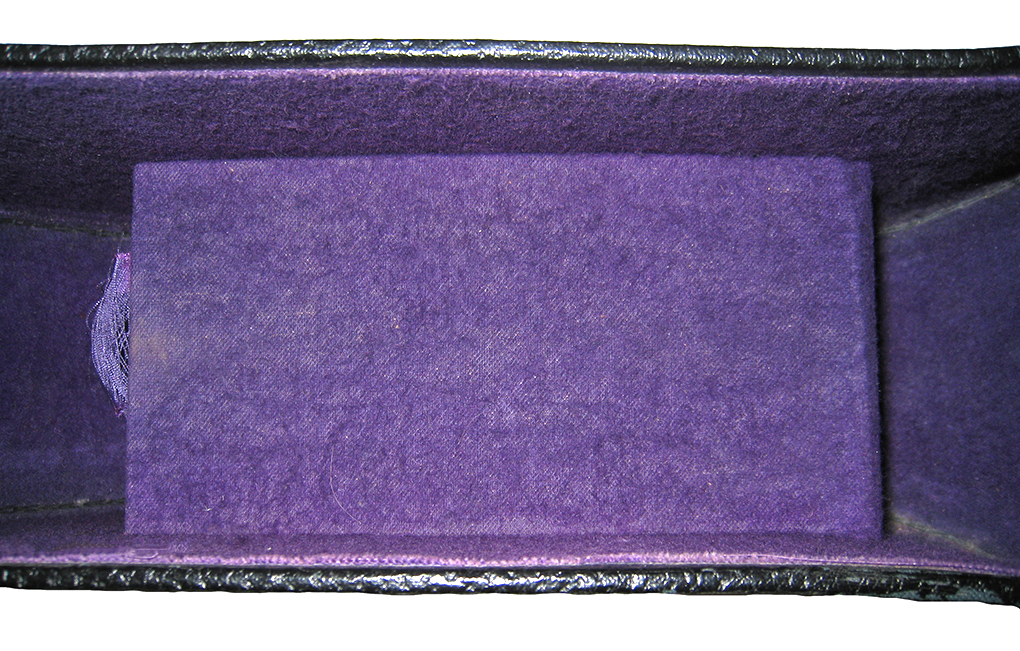
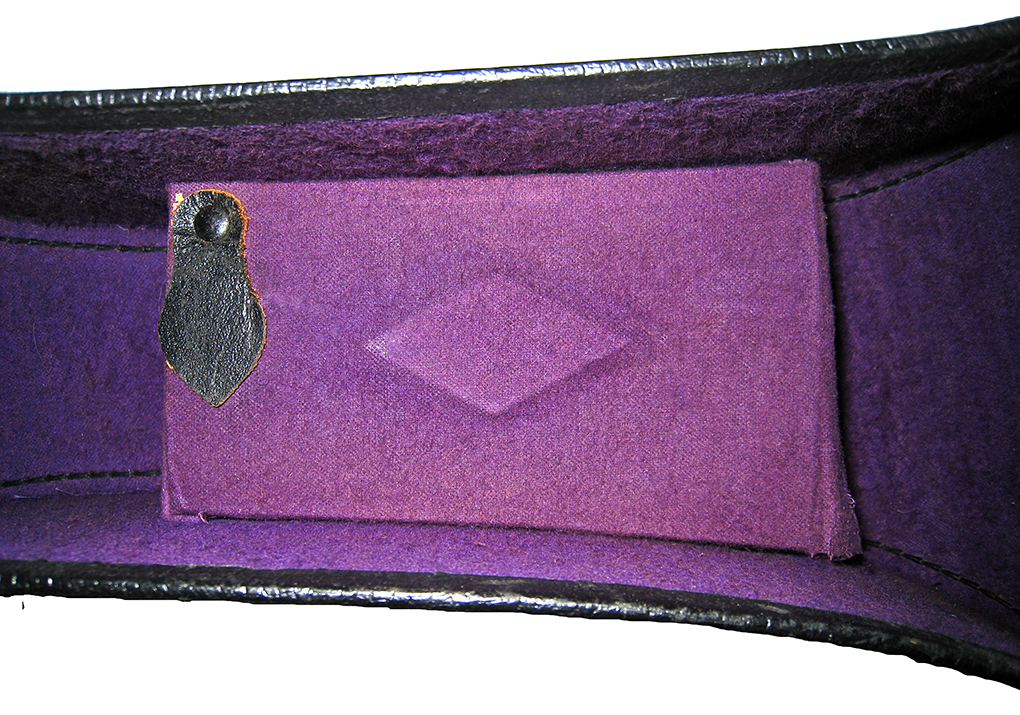
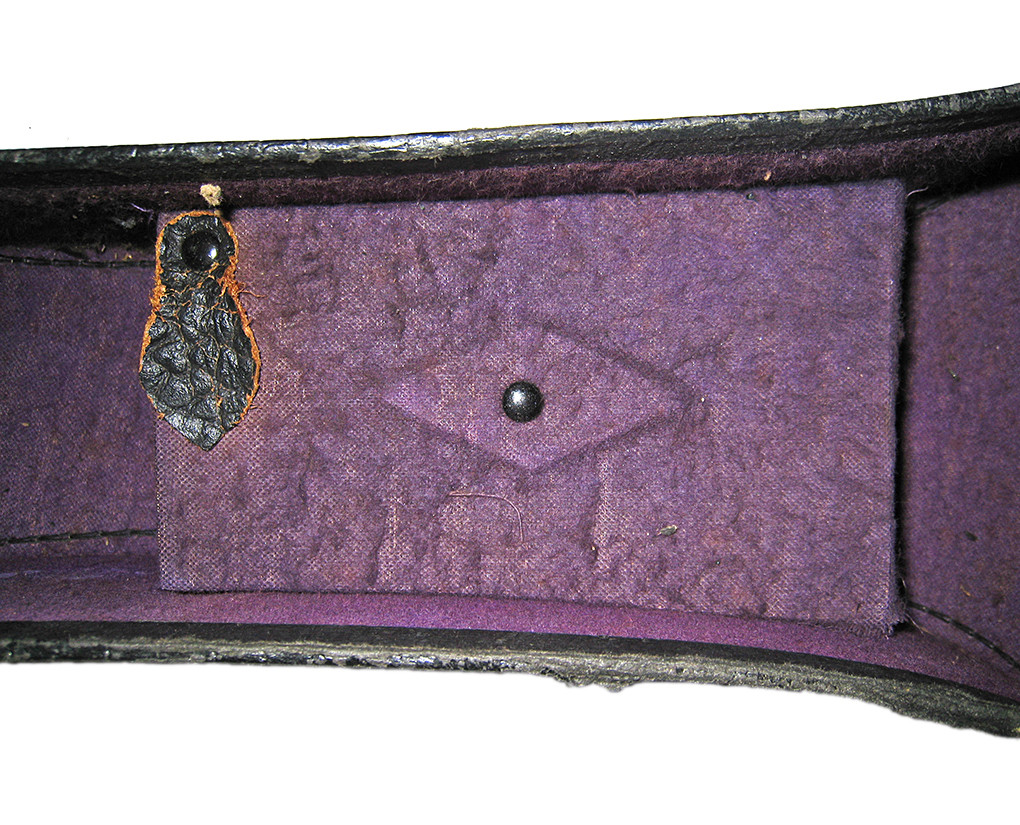
Maulbetsch & Whittemore, Felsberg Co., and Harptone cases can be identified by a double diamond.
Martin 1940 15-20 Mandolin
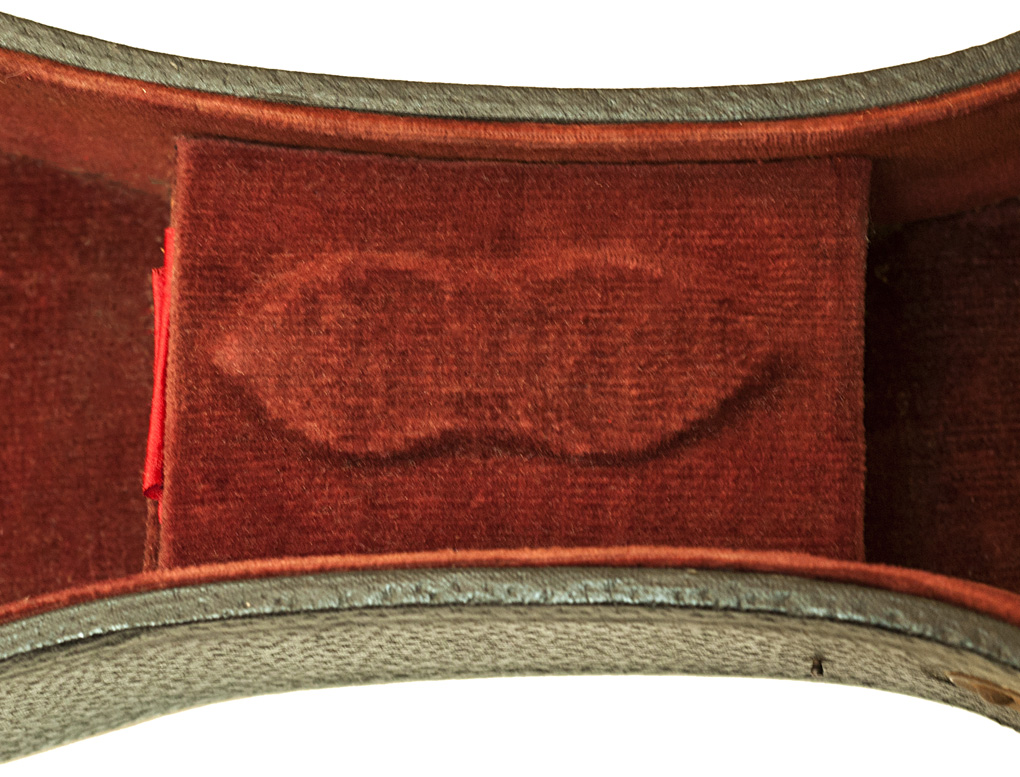
Martin 1930 Paramount Style L Tenor Guitar
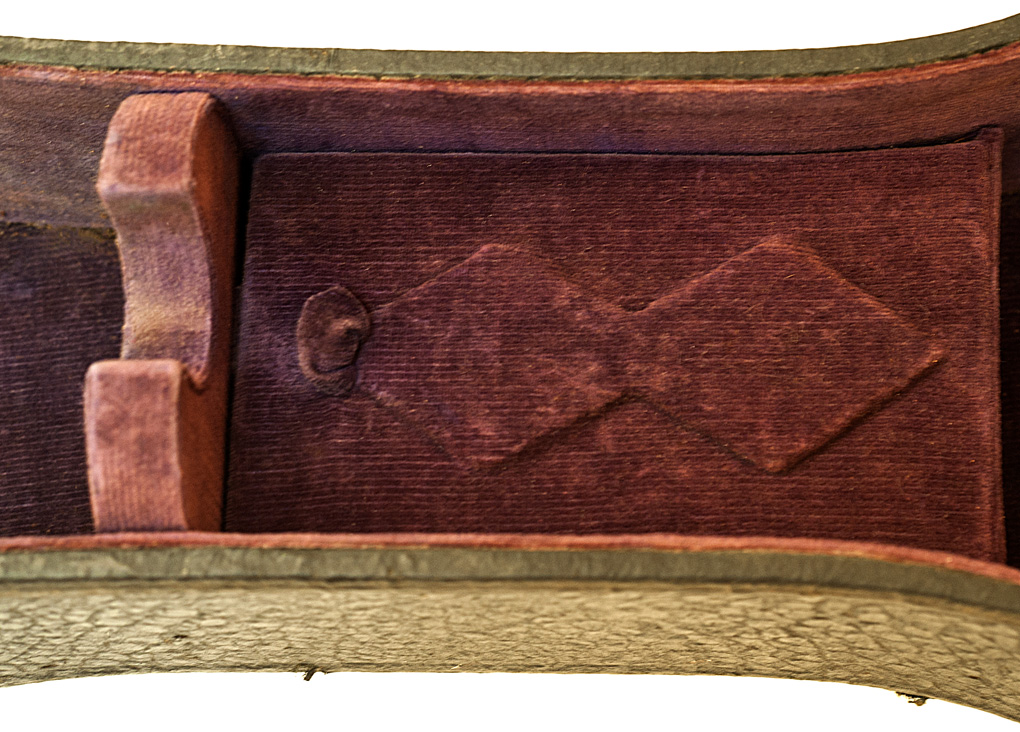
Martin 1933 R-18 Archtop
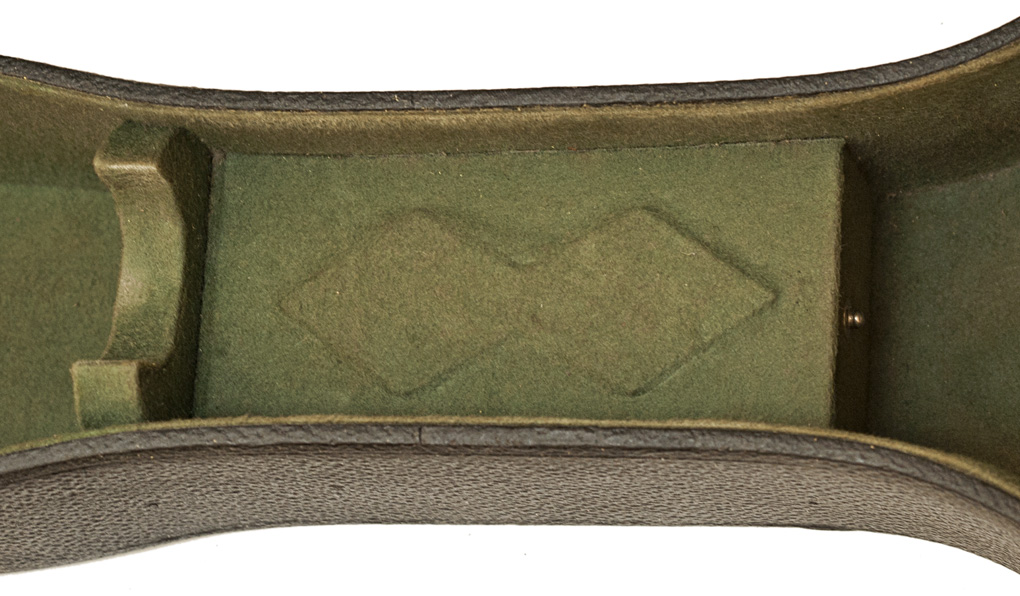
1920's Martin Tenor banjo
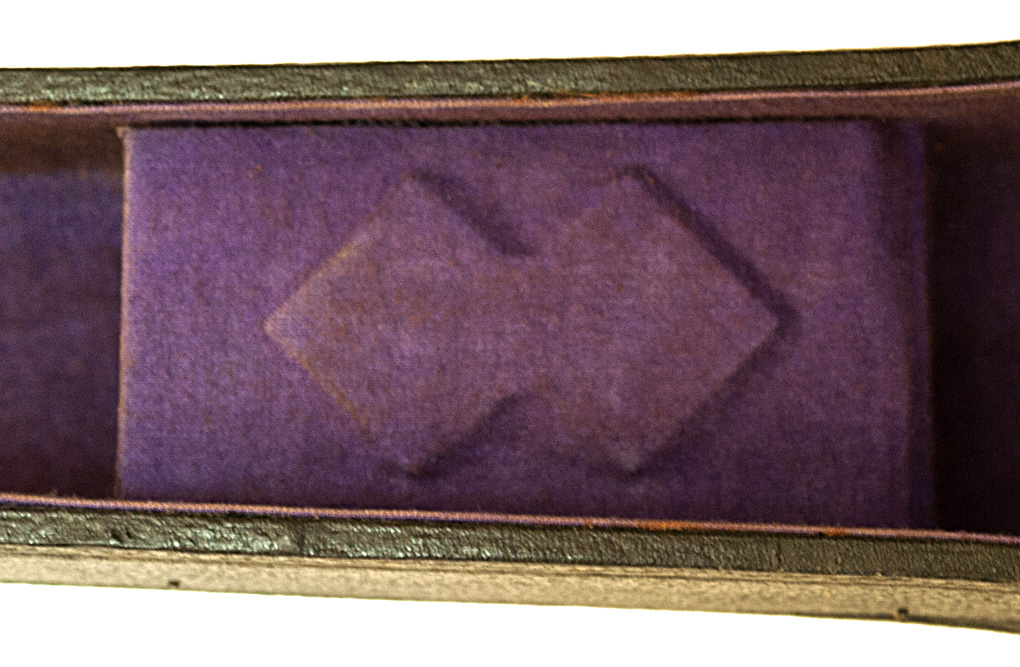
Not original to guitar.
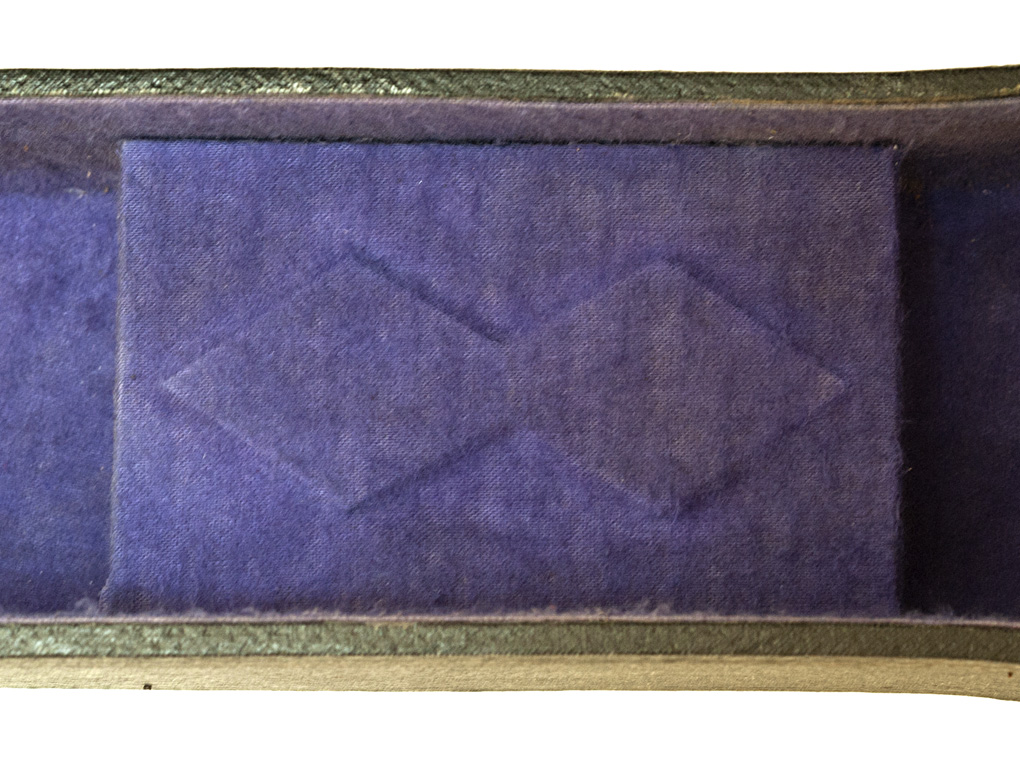
Martin 1930 2-17
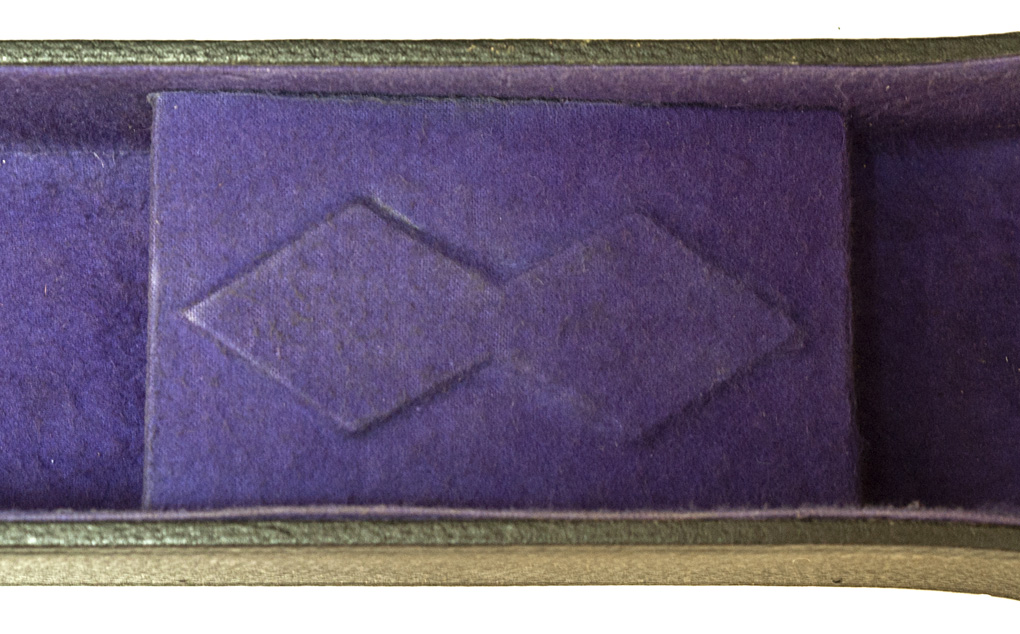
Not original to guitar.
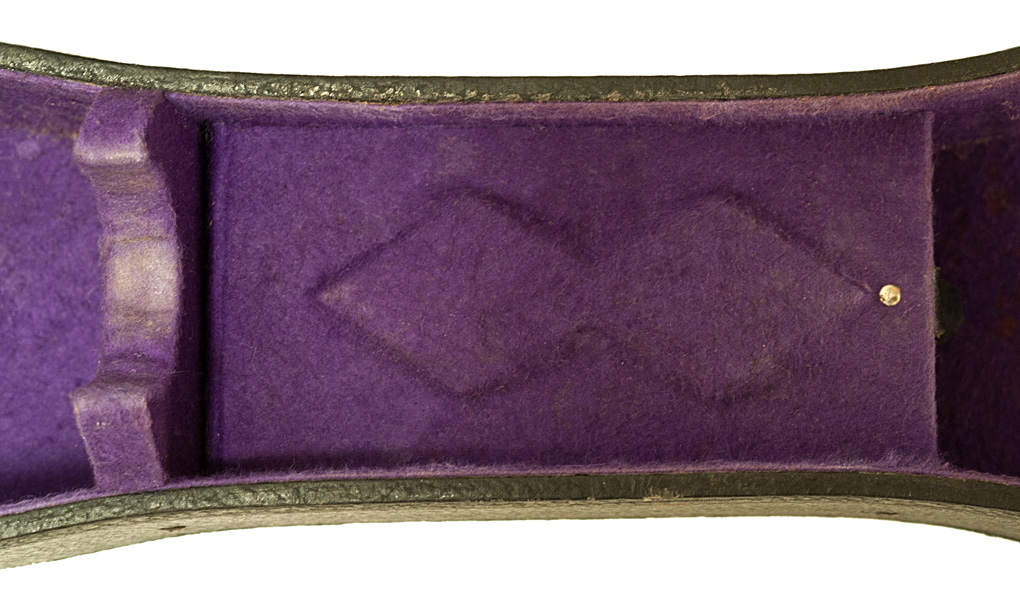
Martin 1916 Ditson Style 22

Geib & Schaeffer / Geib Inc. Hard Shell Cases
Geib would become the case company most often associated with Gibson over the years.
1921 Gibson L-1

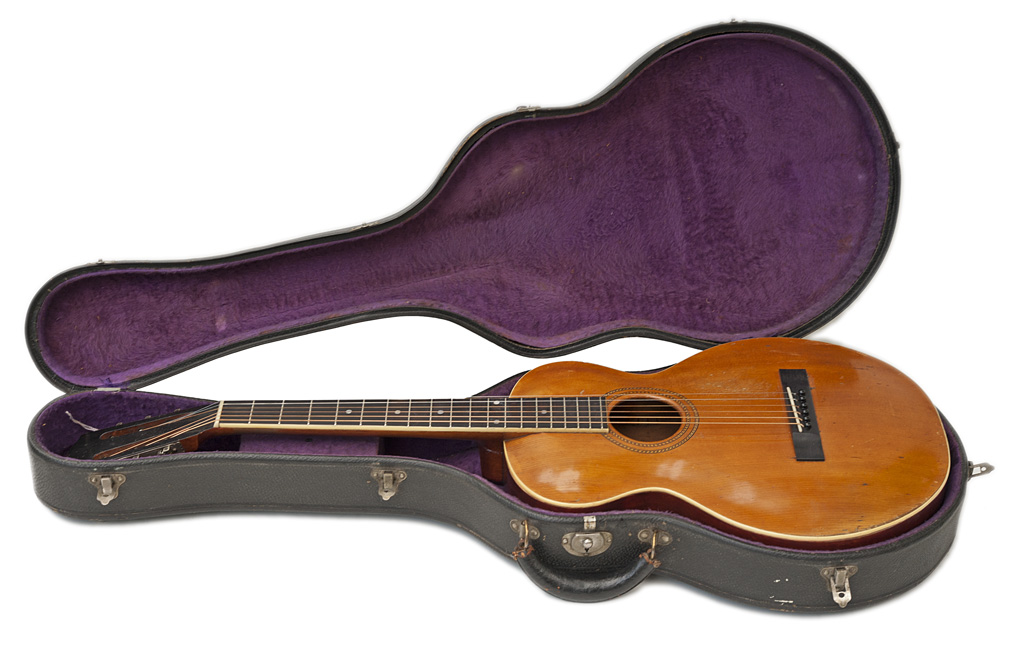
In the 1930's, Geib & Schaeffer cases were recognizable from the red line on the border of the lid, giving these cases the name "red line cases".
"Red Line" and "Tweed" cases are produced from approximately the mid-1930's to the early 1940's.
1934 Gibson Roy Smeck Radio Grande
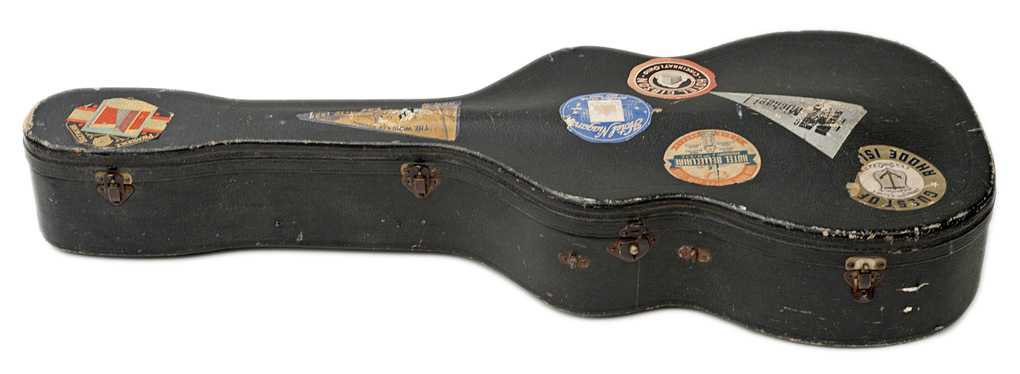
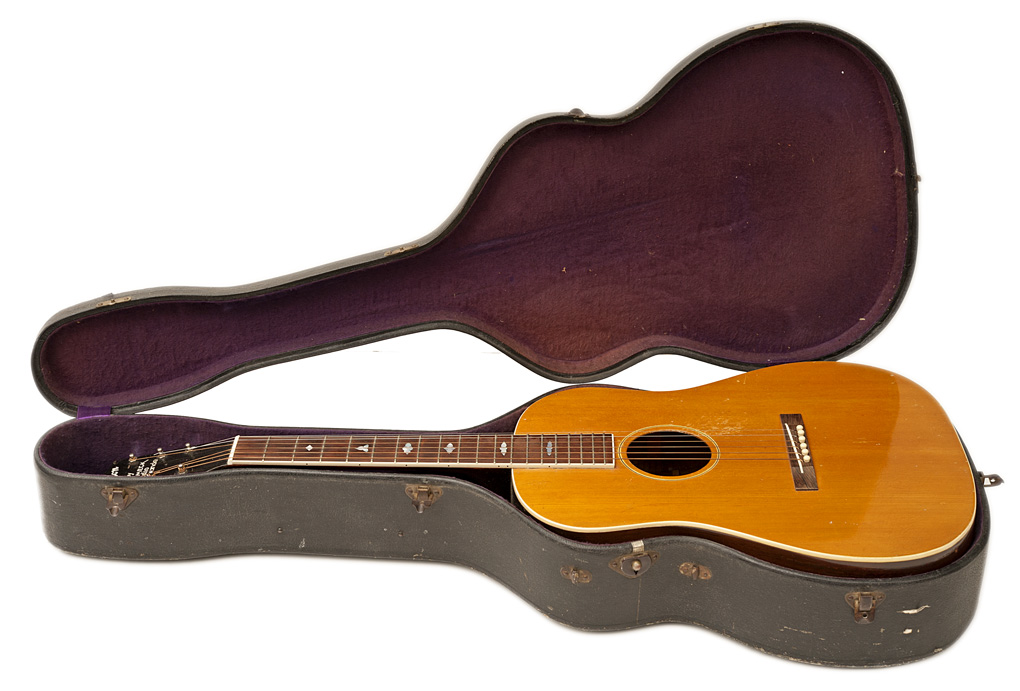
1930's Gibson Century
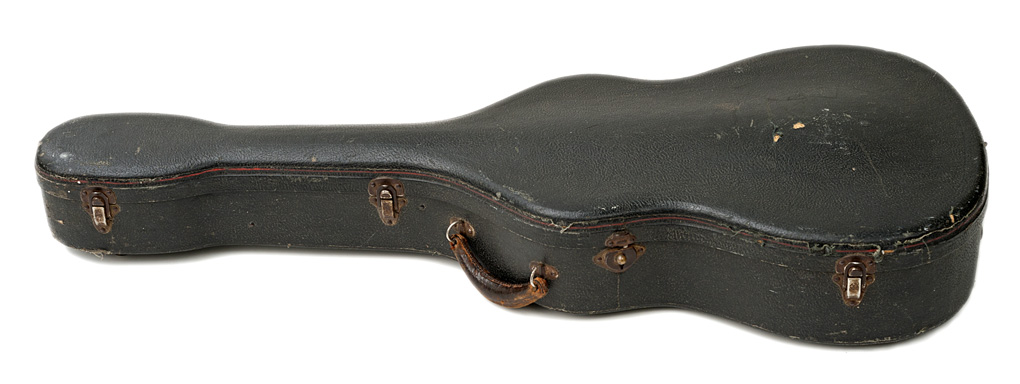
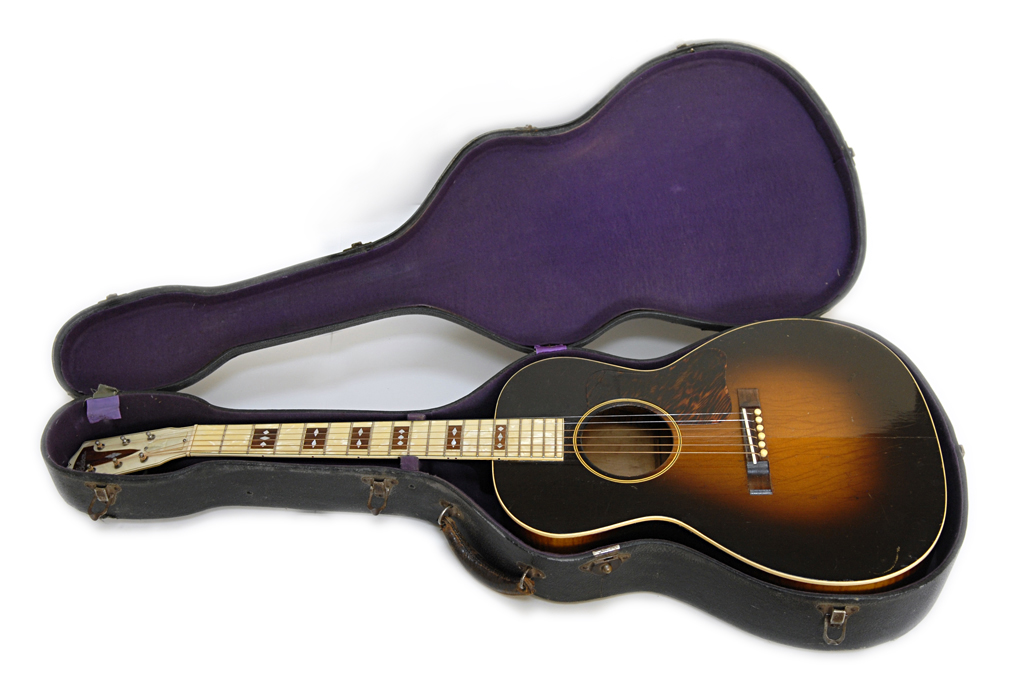
1932 Gibson Nick Lucas
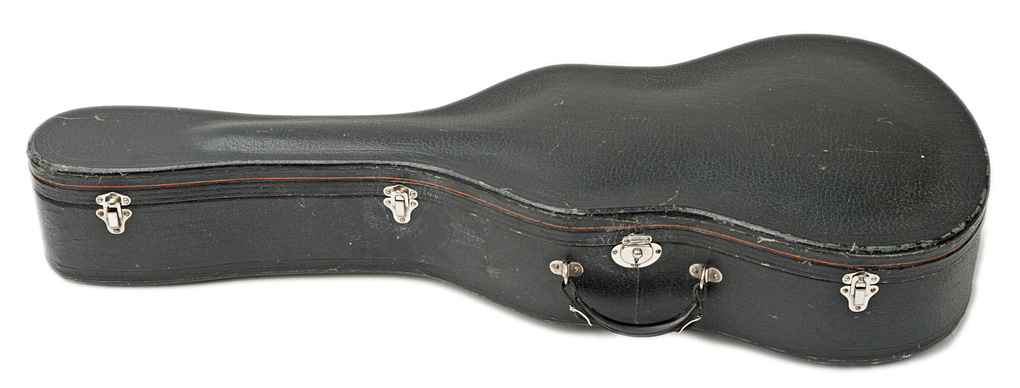
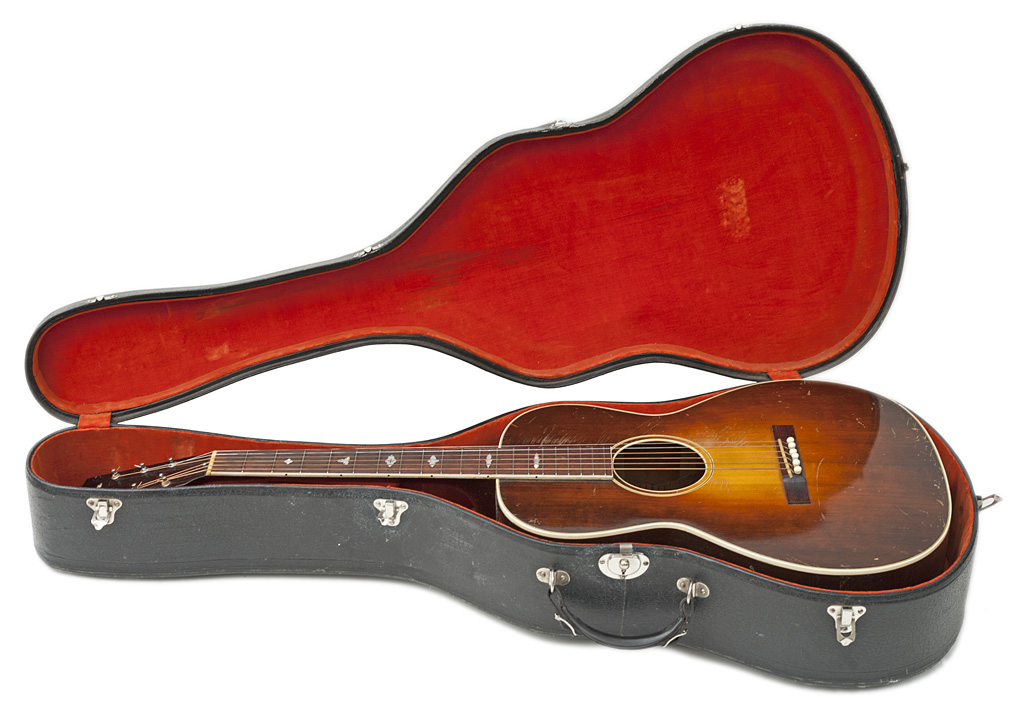
1940 Gibson Roy Smeck Stage Deluxe
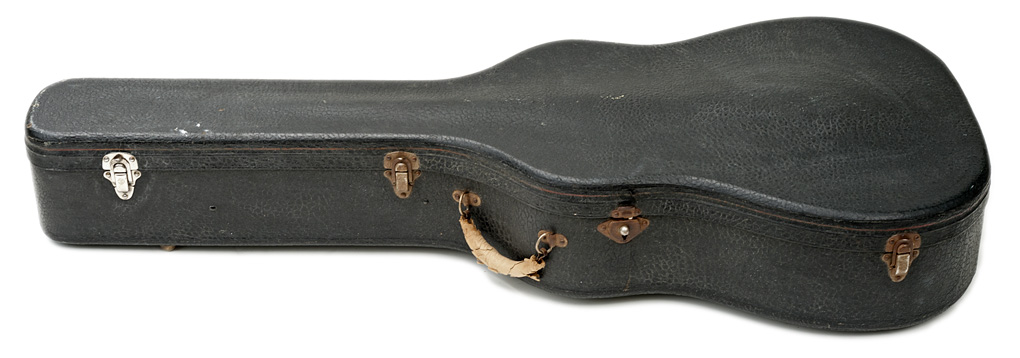
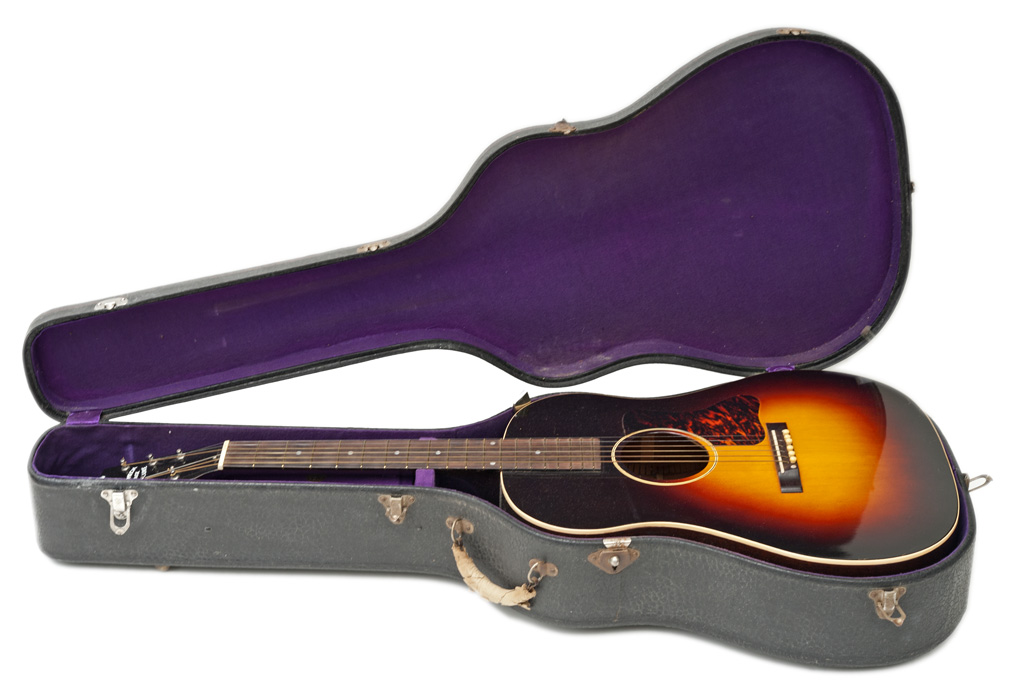
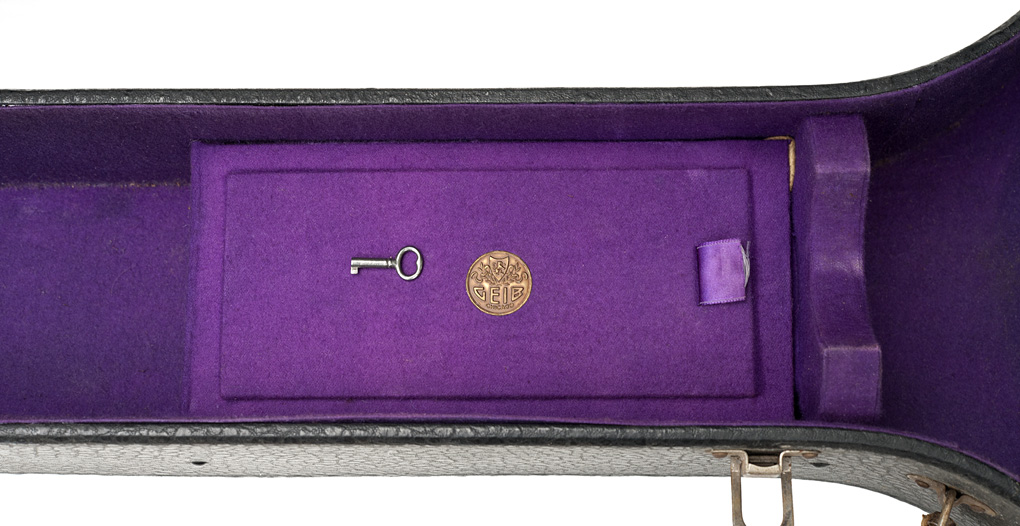
1938 Gibson L-10
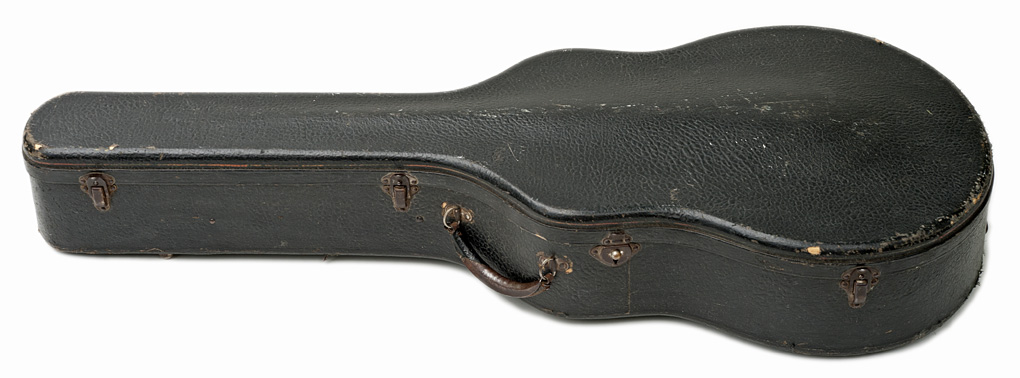
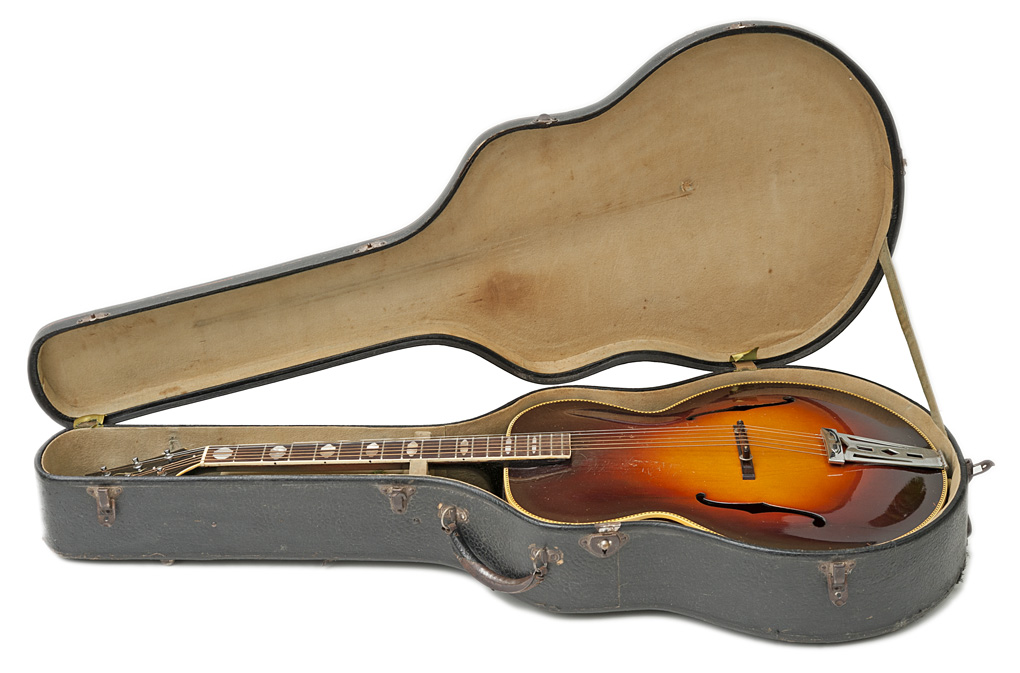
In the mid 1930's Gibson's Geib cases were recognized by their tweed designs with stripes, which were perhaps most recognized on their Geib covered amplifiers.
1939 Gibson EH-150

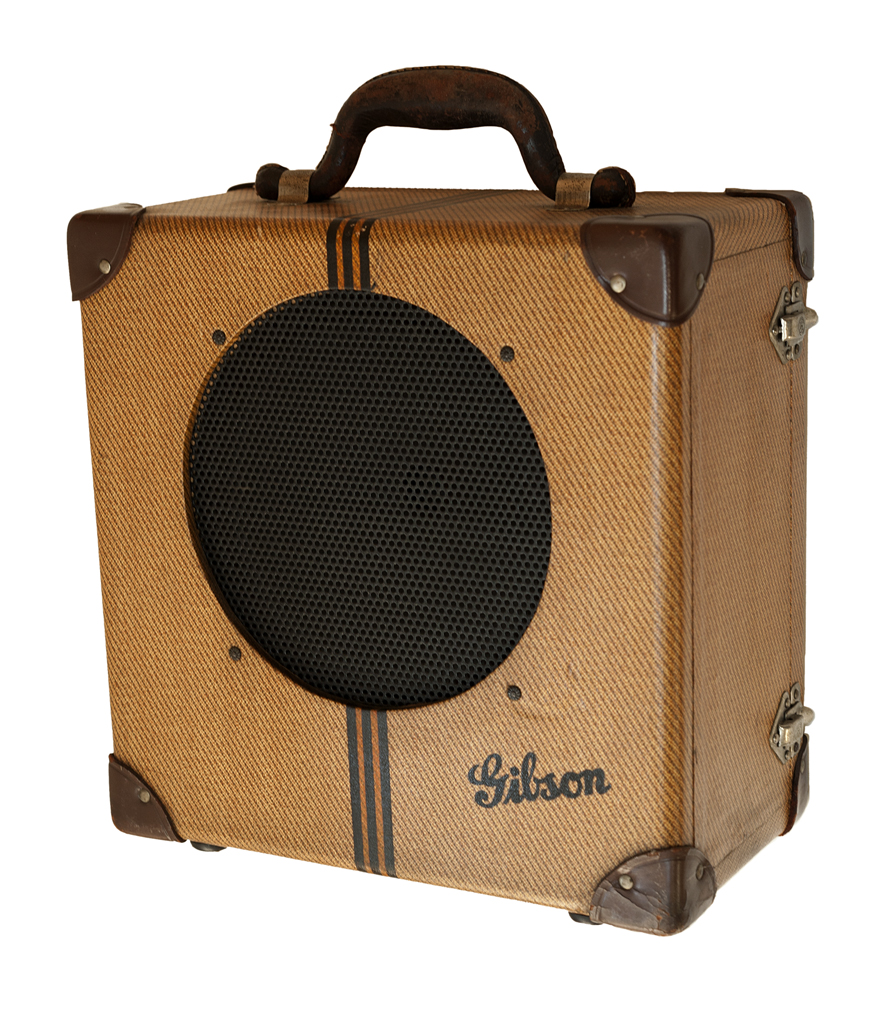
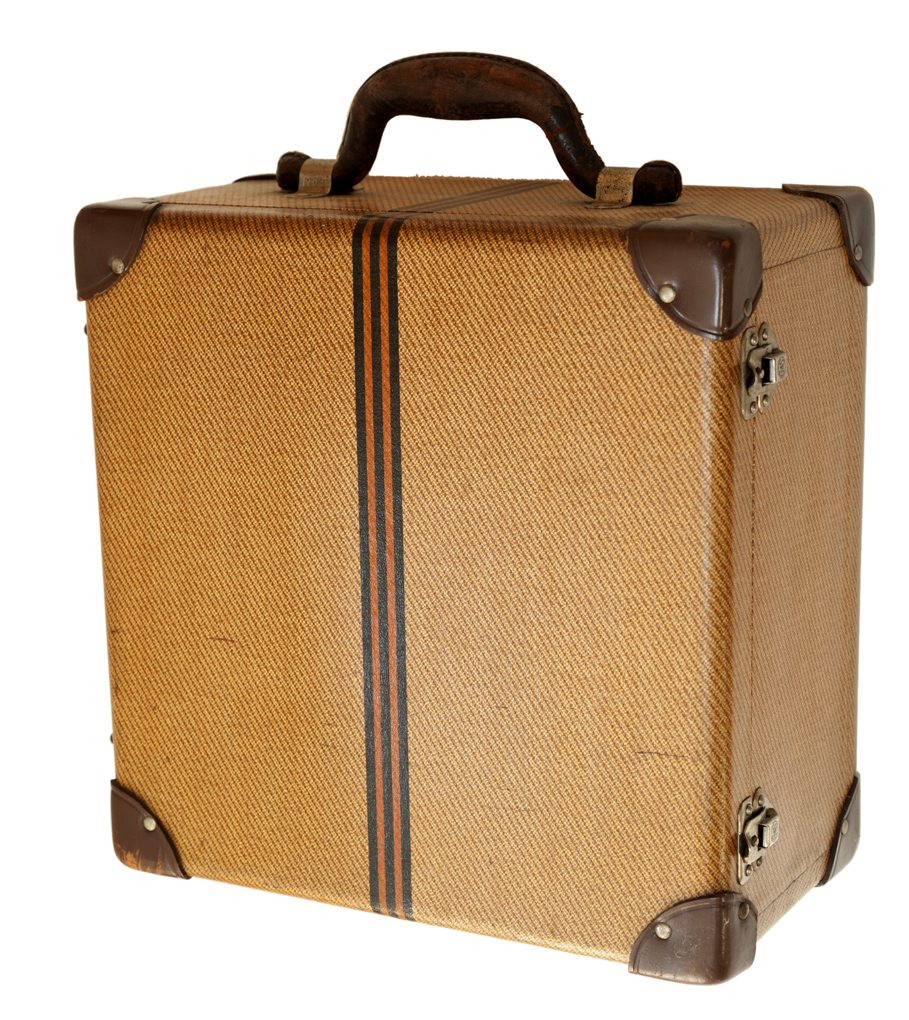
Geib & Schaeffer Hard Shell cases were made with the DuraBilt, MasterKraft, KantKrack and Student imprints.
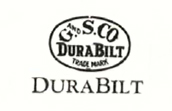
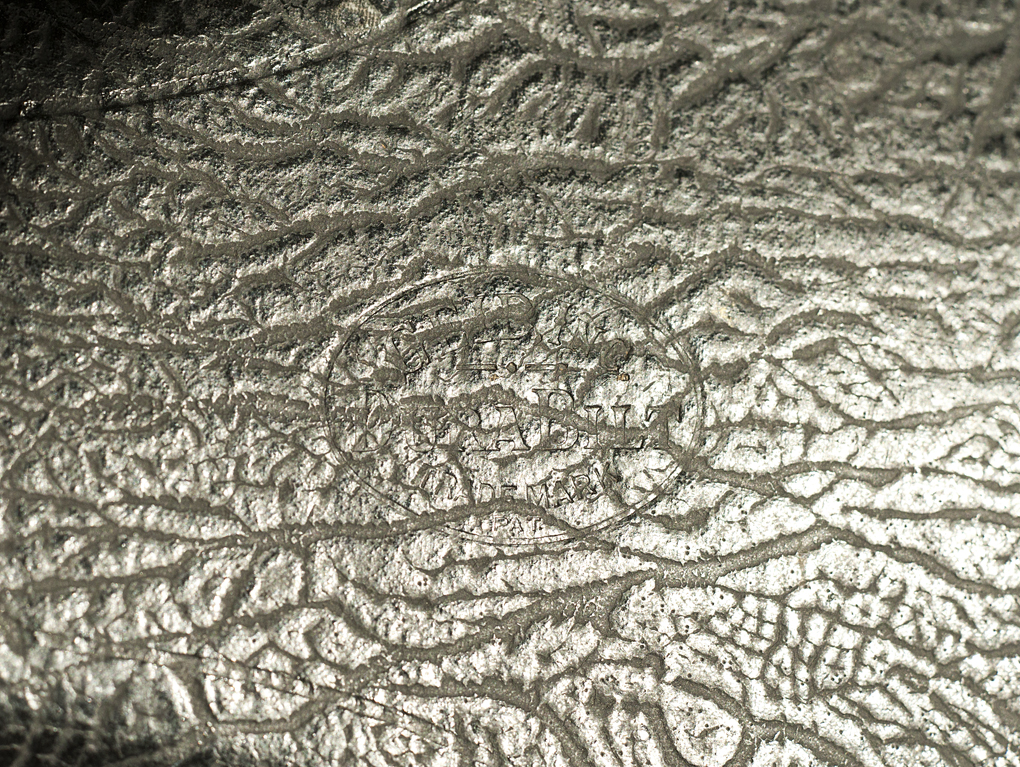
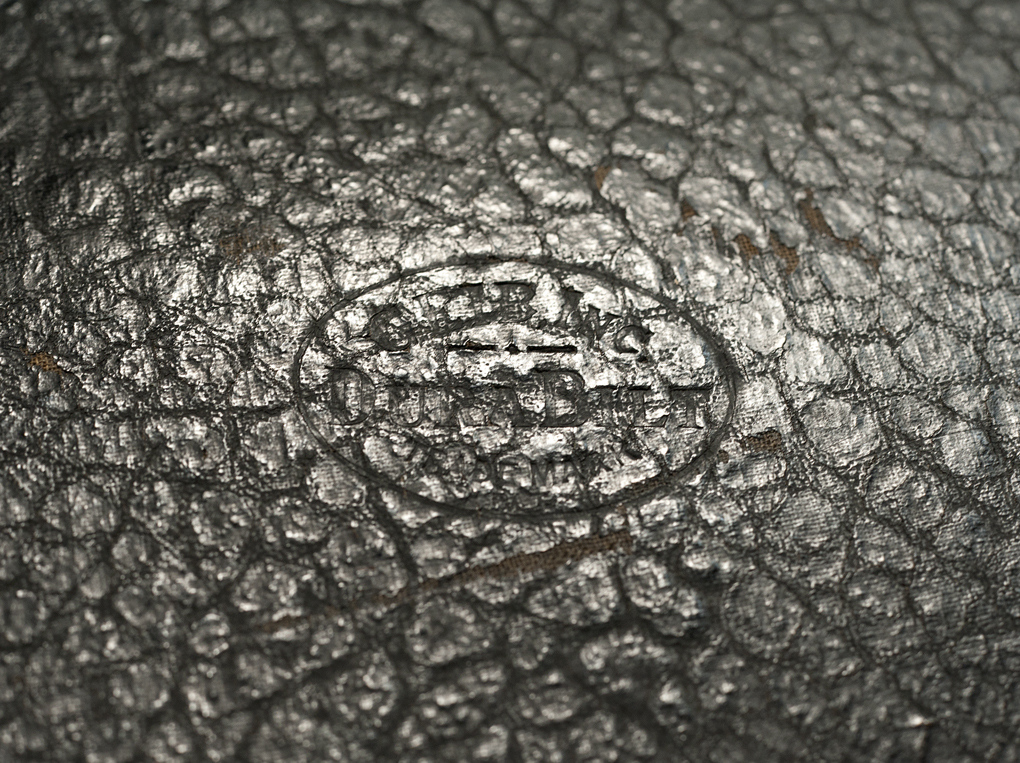
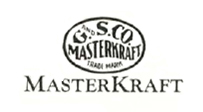
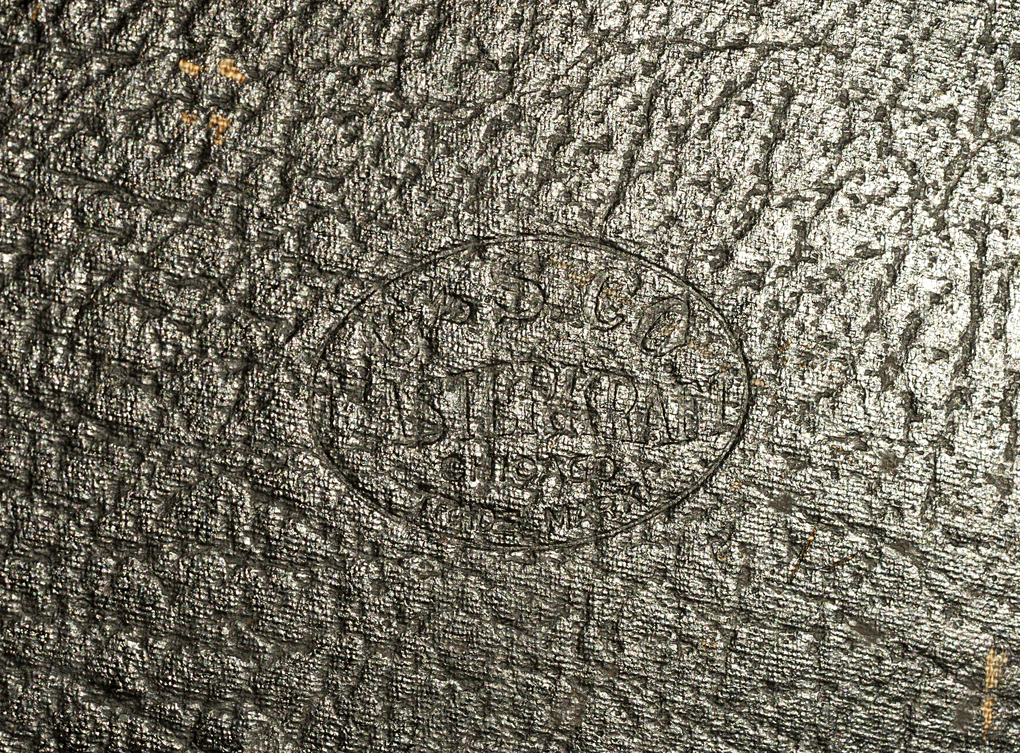
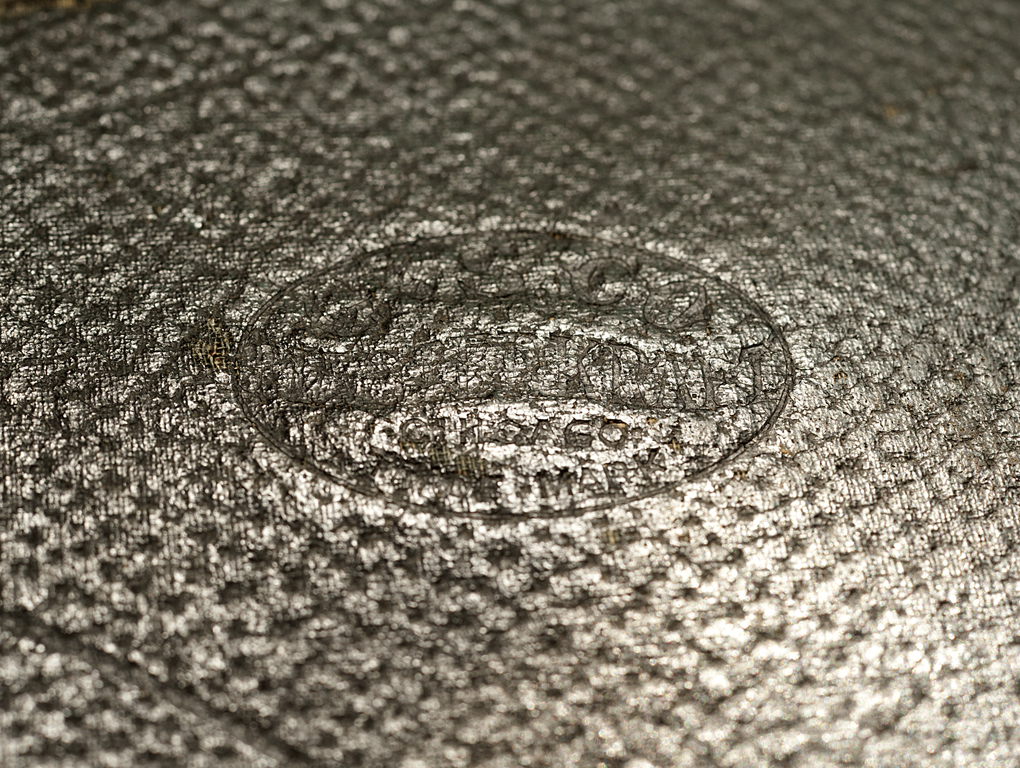
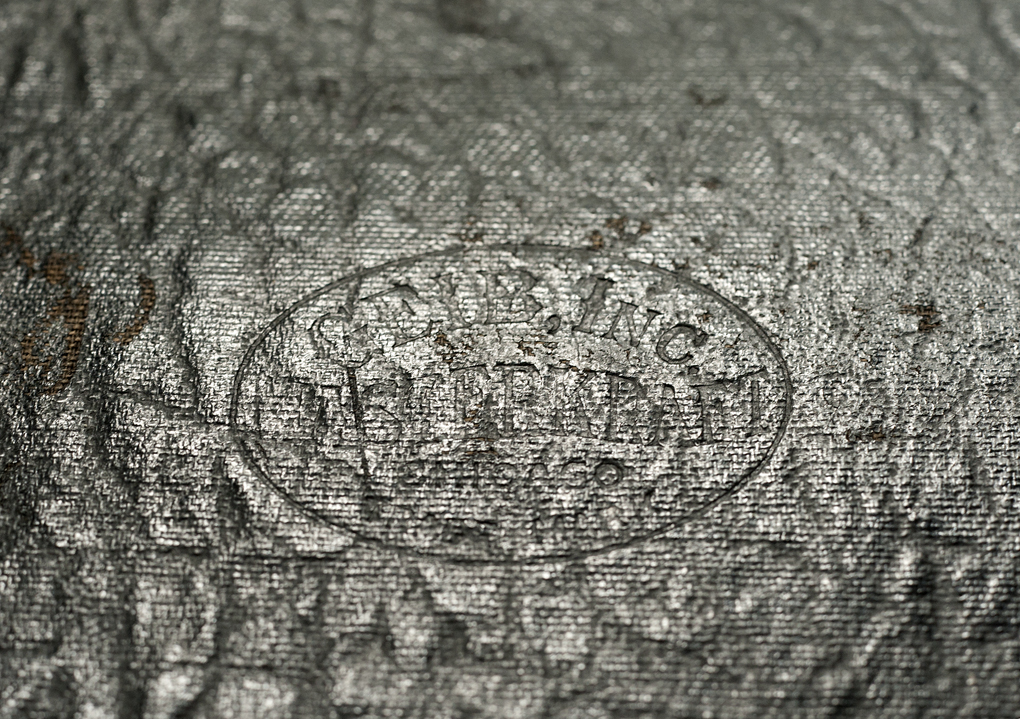
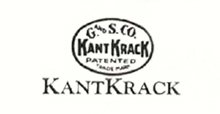

"STUDENT"
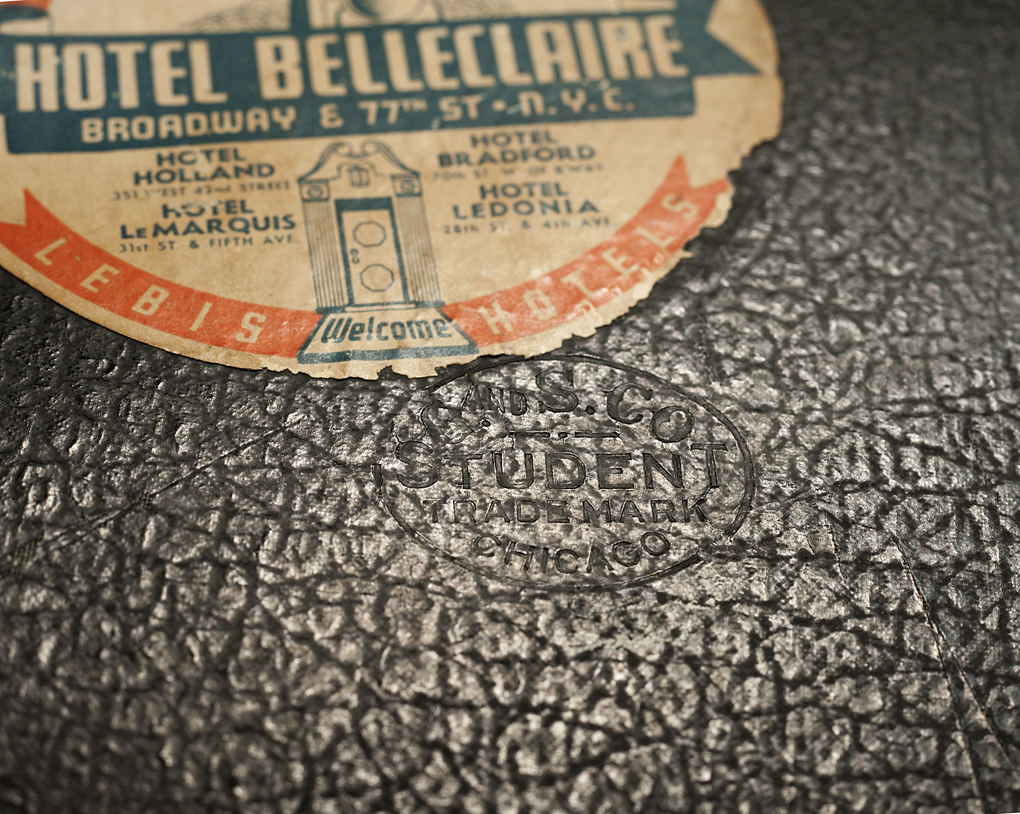
Felsberg / Harptone Hard Shell Cases
Most hard shell cases used by Martin beginning around 1920 are stamped with the symbol of the bull with the letters "FF", for the Felsberg Company, the second iteration of what would become the Harptone Company in 1928. Harptone adopted the bull logo with the letters "B" and "C" representing the last initials of the company's officers.
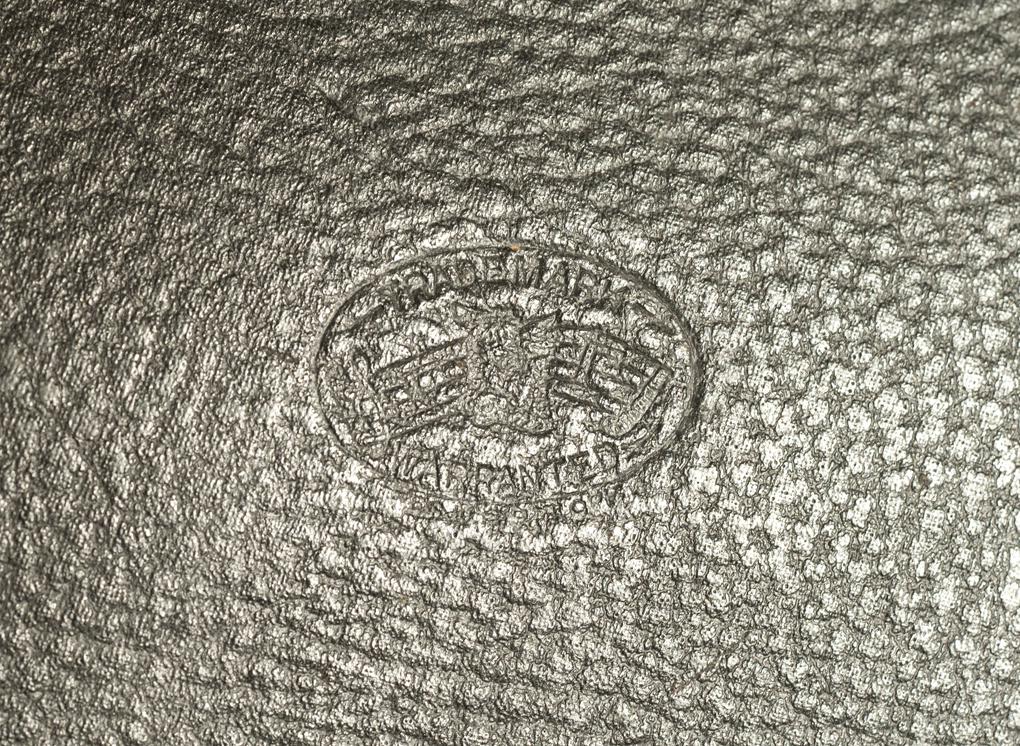
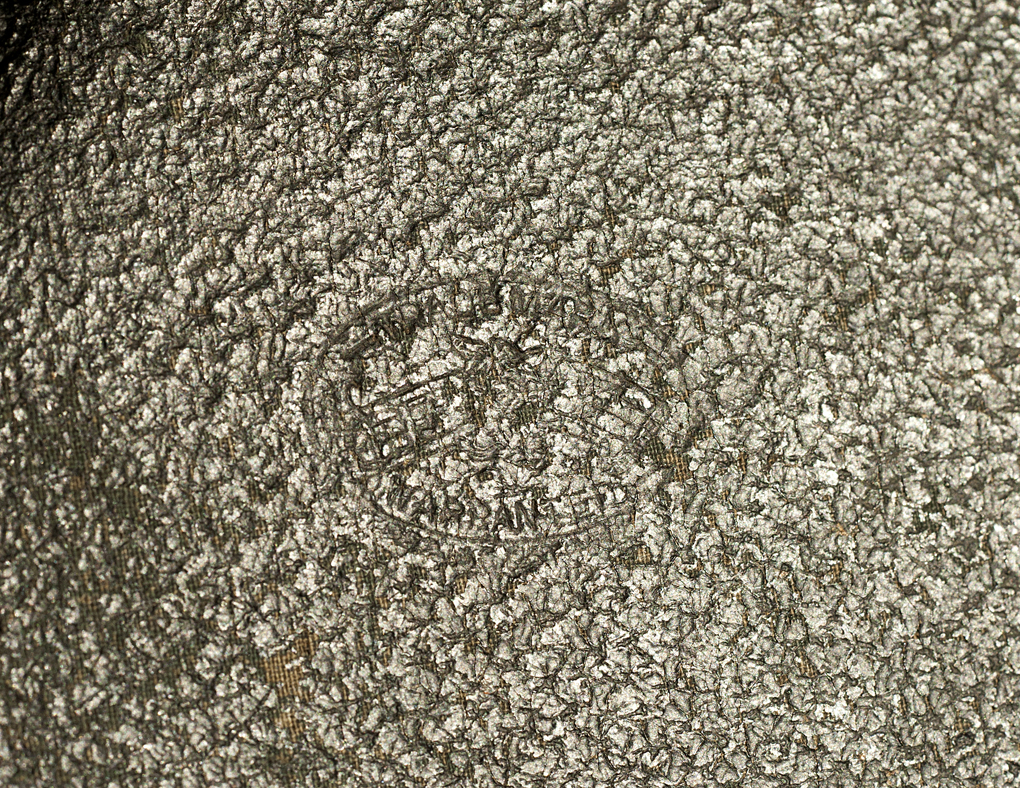
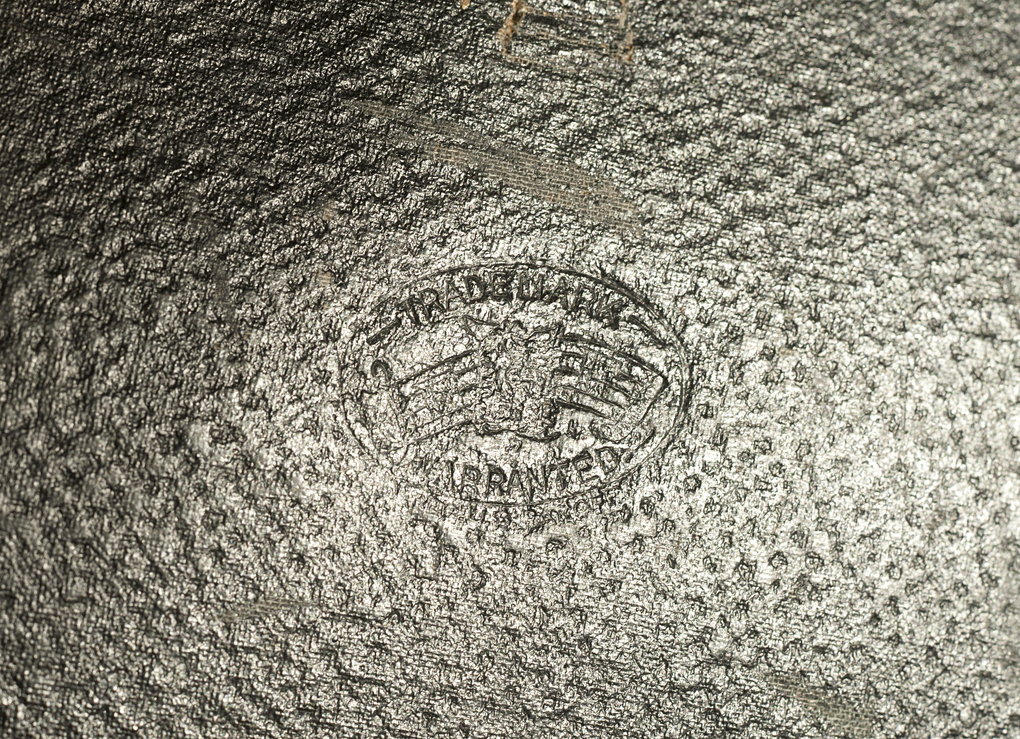
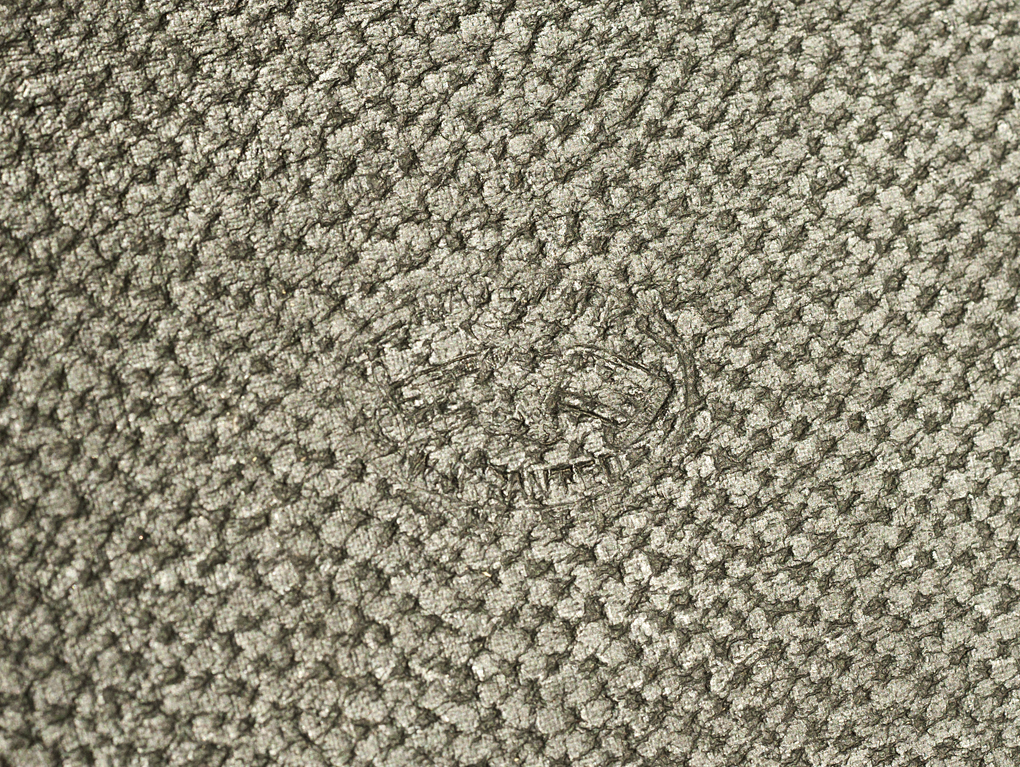
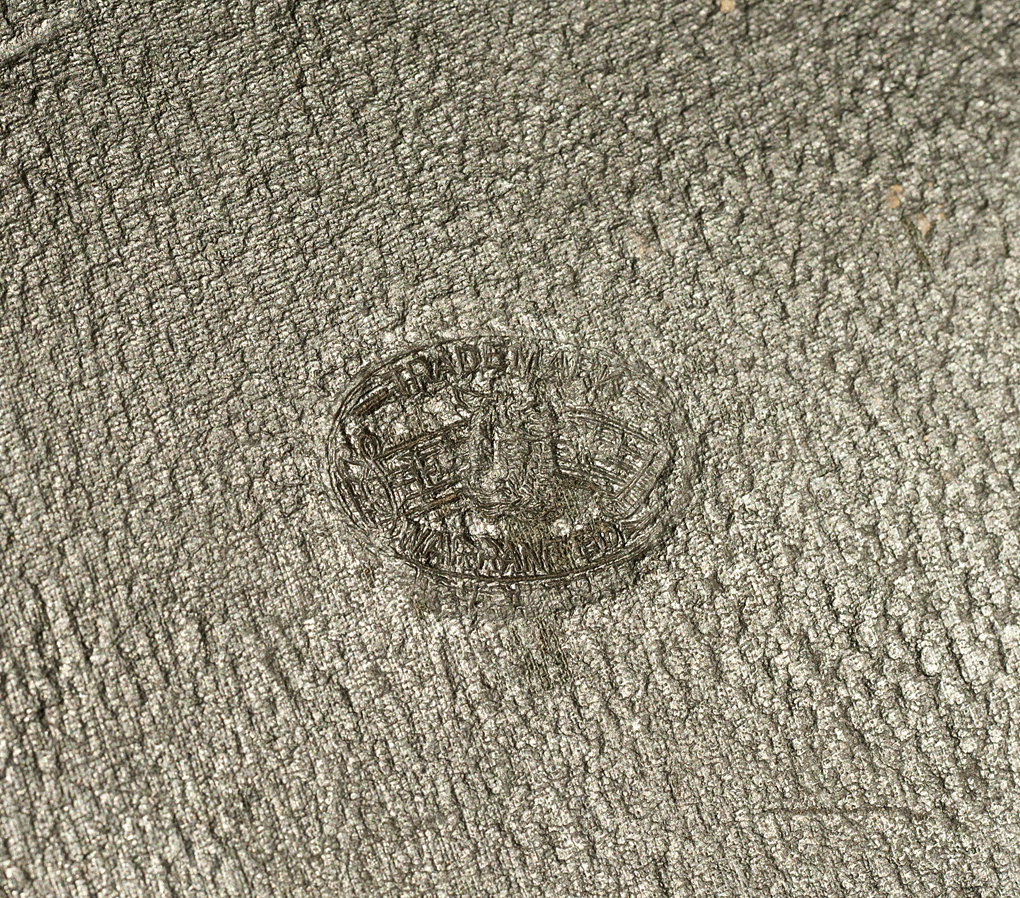
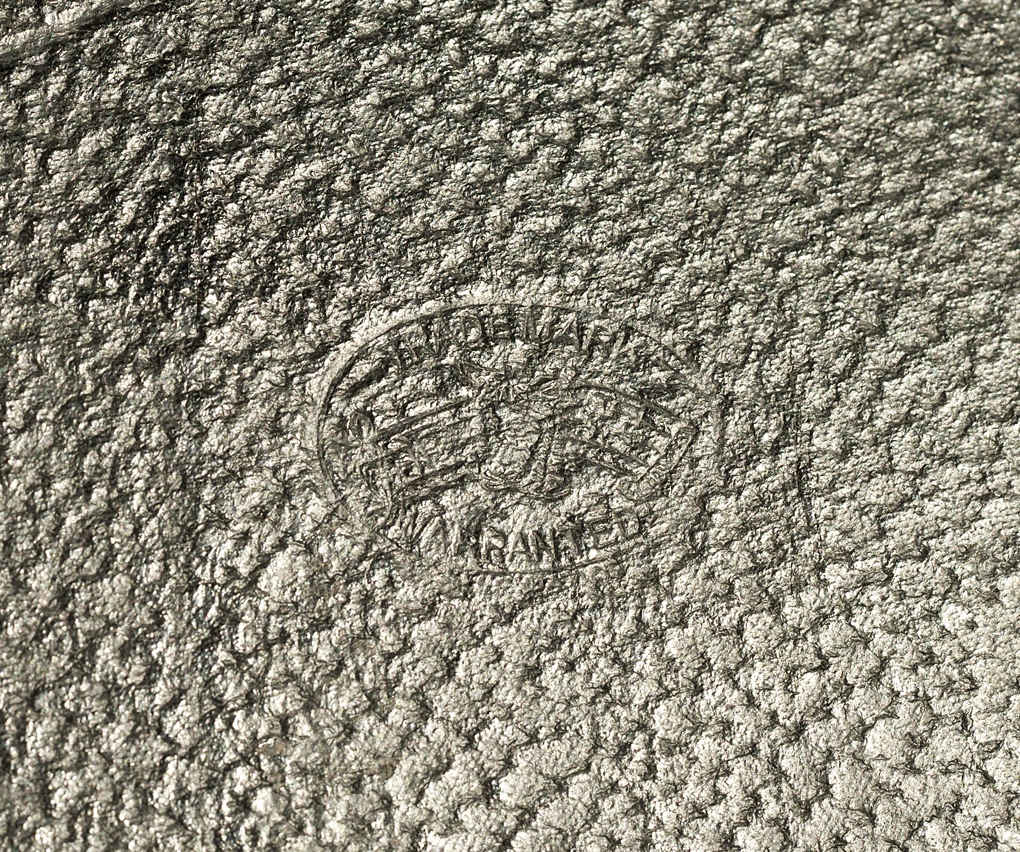
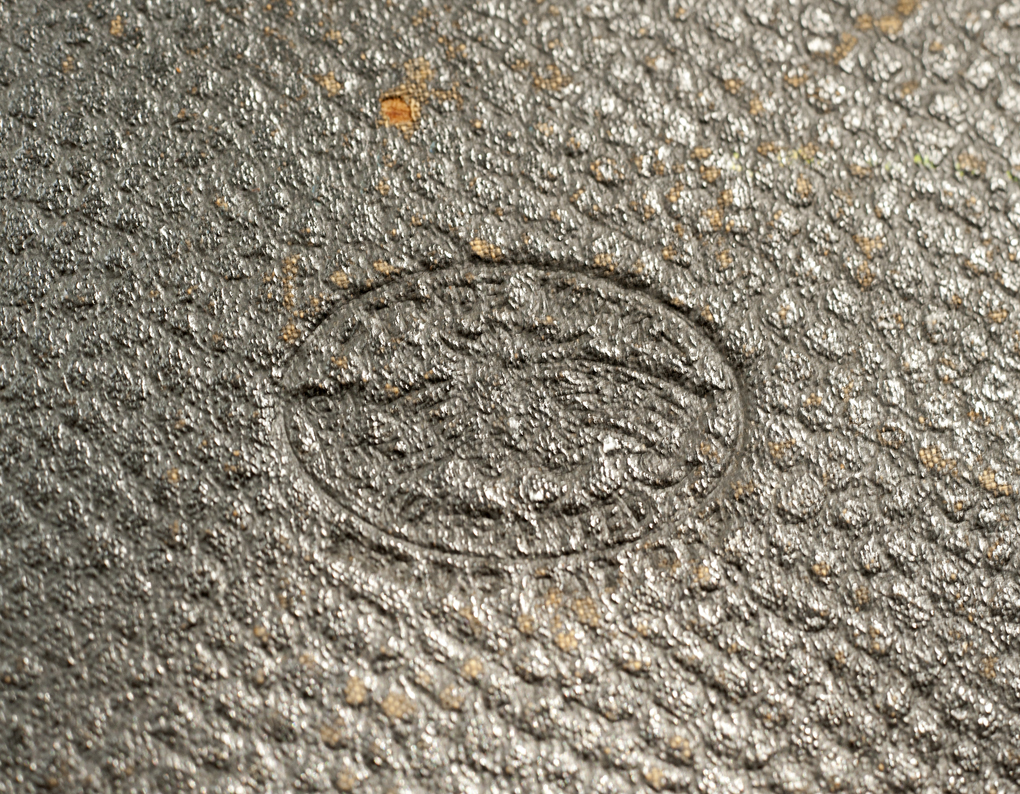
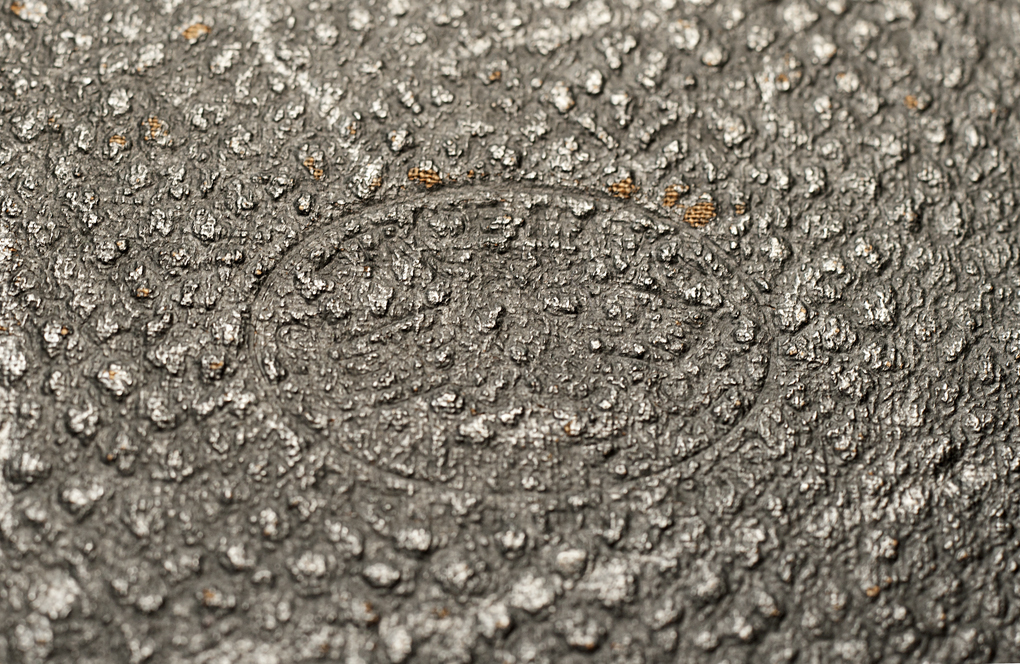
Hard Shell Case Latches
Triangular Base Lock
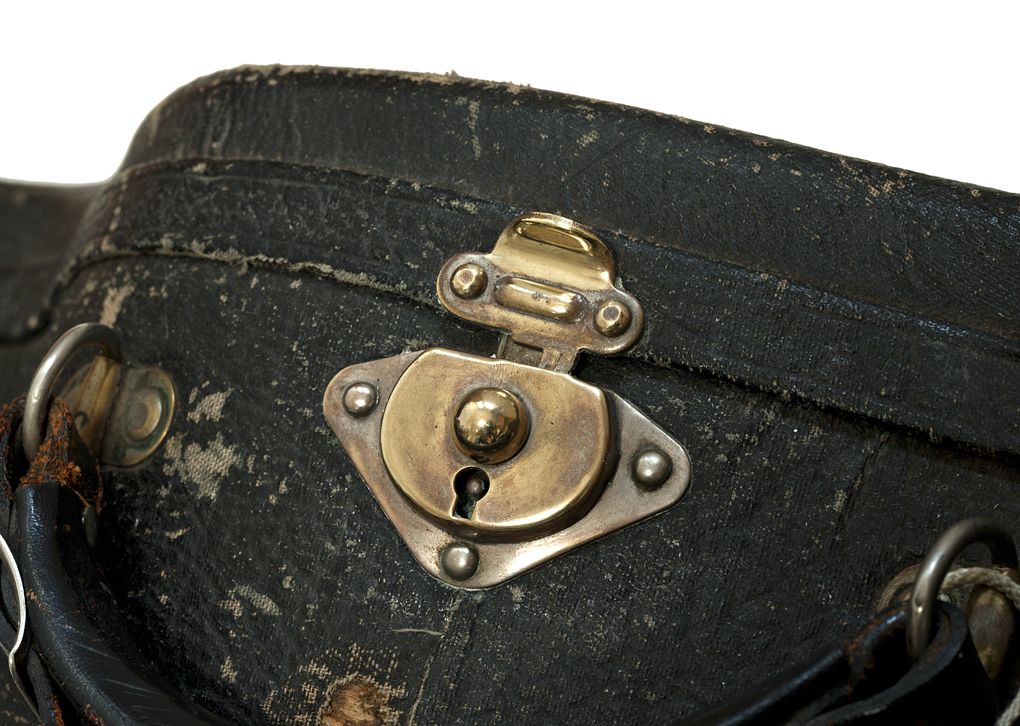
Oval Base Lock
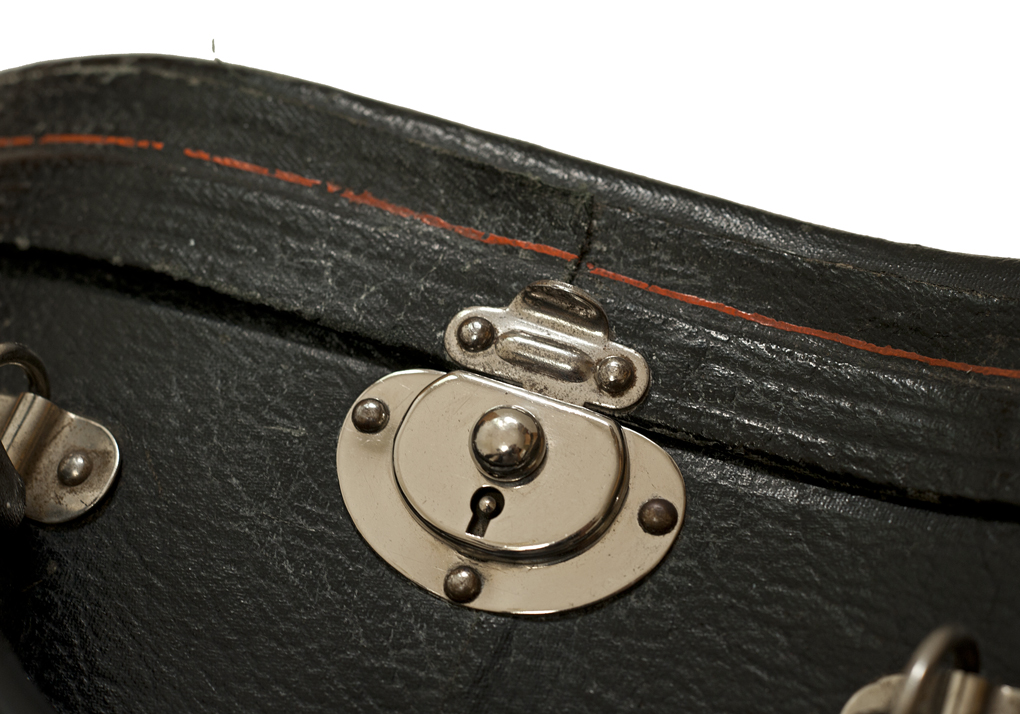
Eagle Lock Co., "Made in USA"
Tall Top / 3 Piece Rounded Base
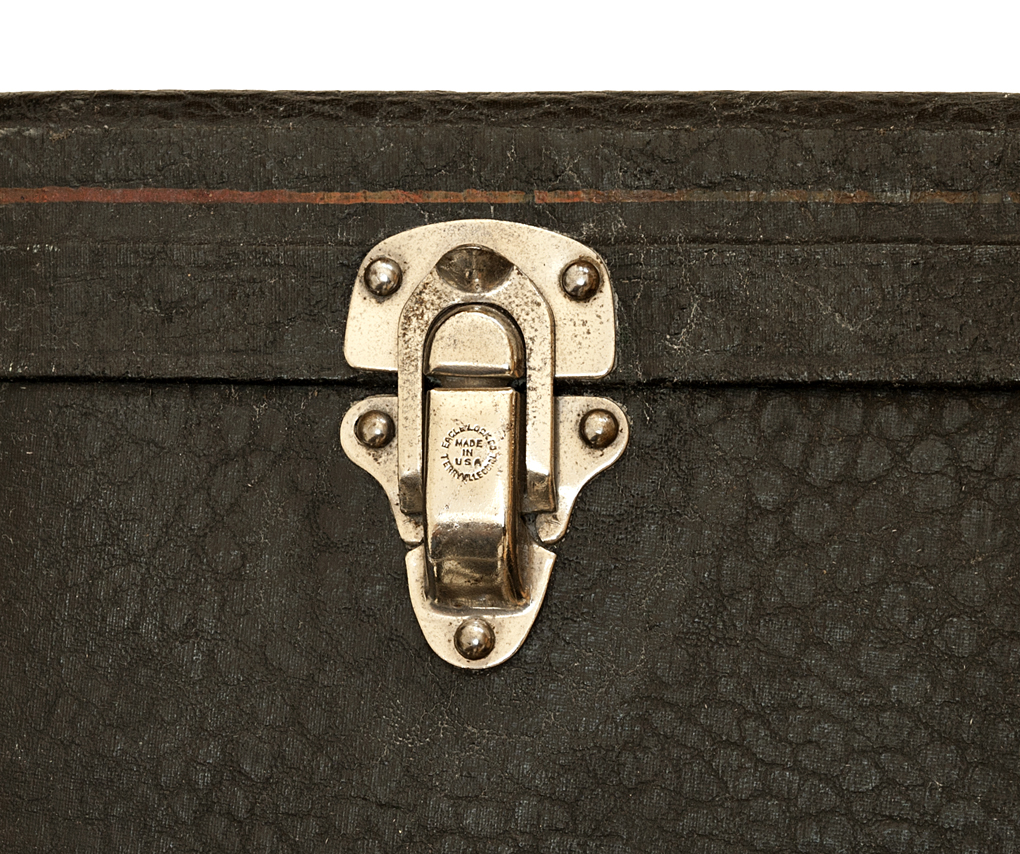
Eagle Lock Co., "USA"
Tall Top / 1 Piece Rounded Base
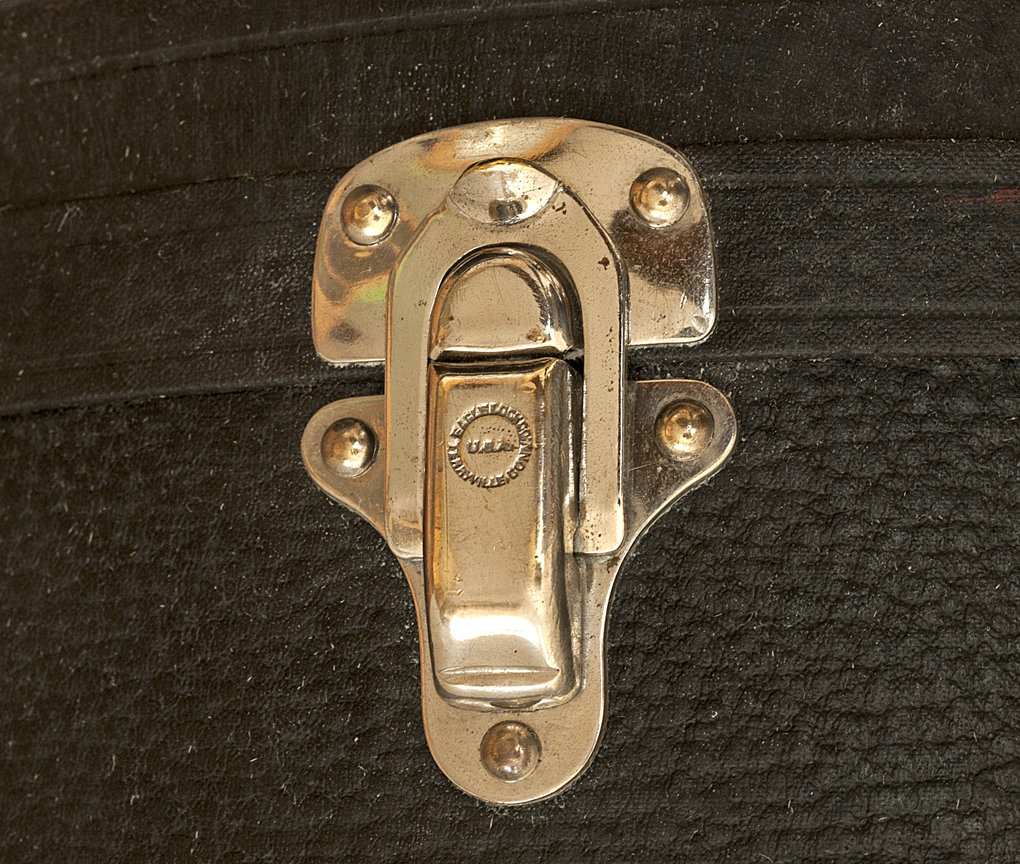
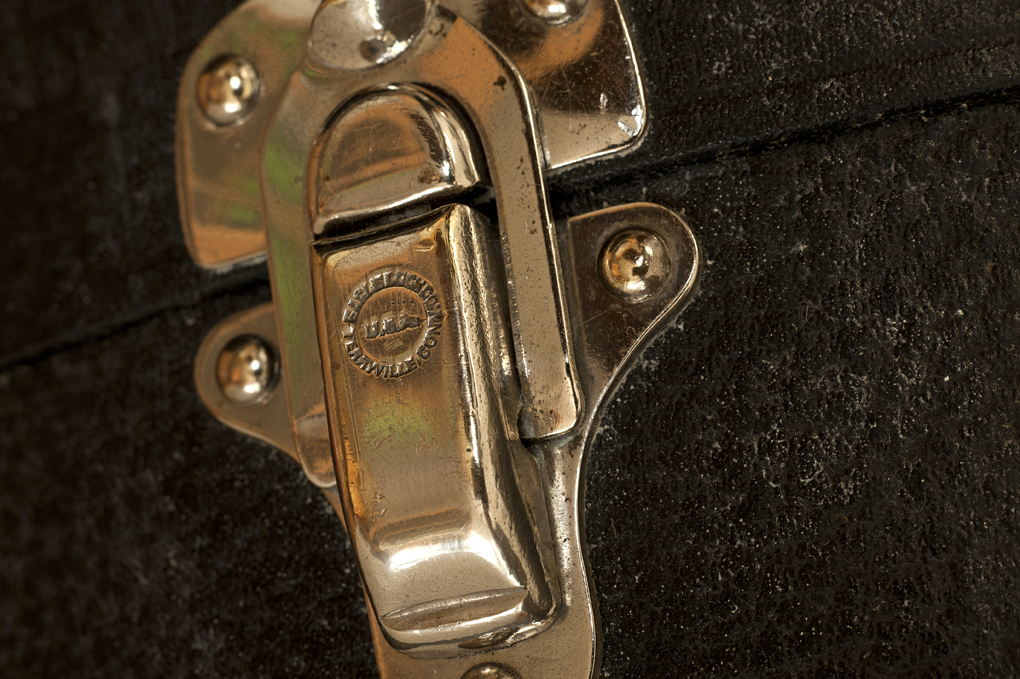
Maulbetsch & Whittemore "M&W"
Rounded Top / 1 Piece Rounded Base
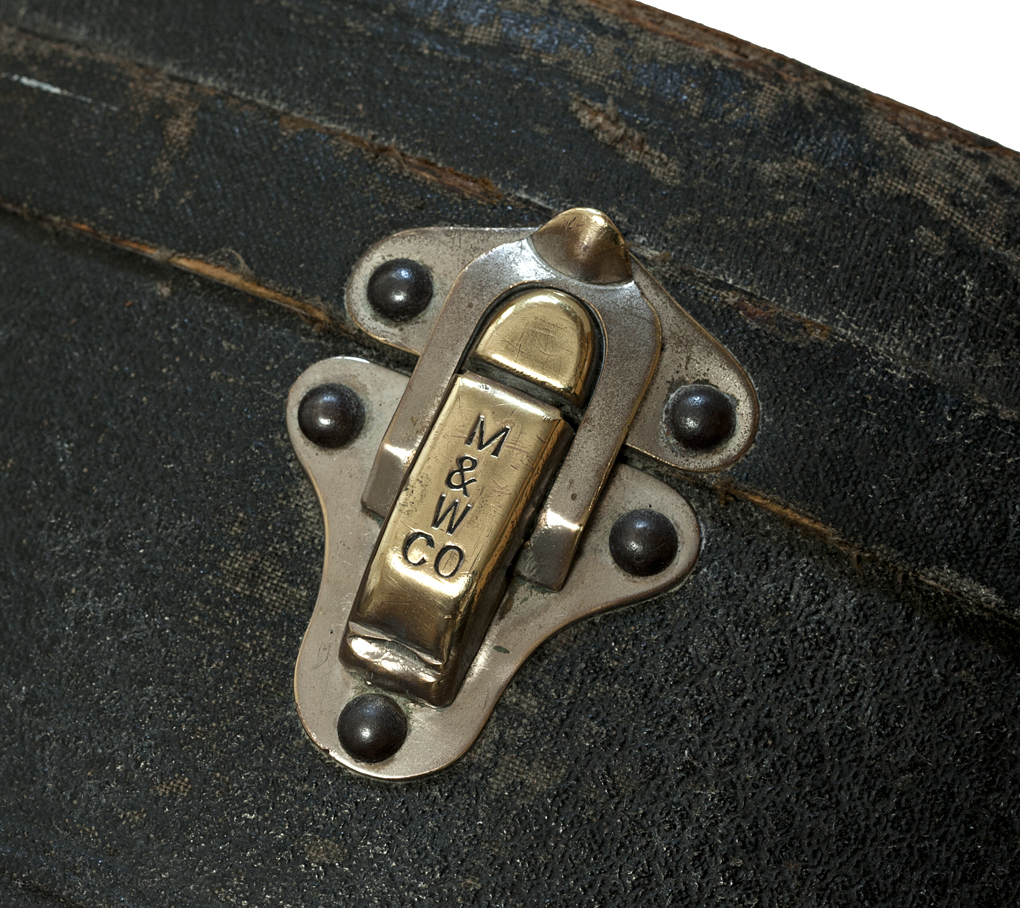
"No Name"
Rounded Top / 1 Piece Rounded Base
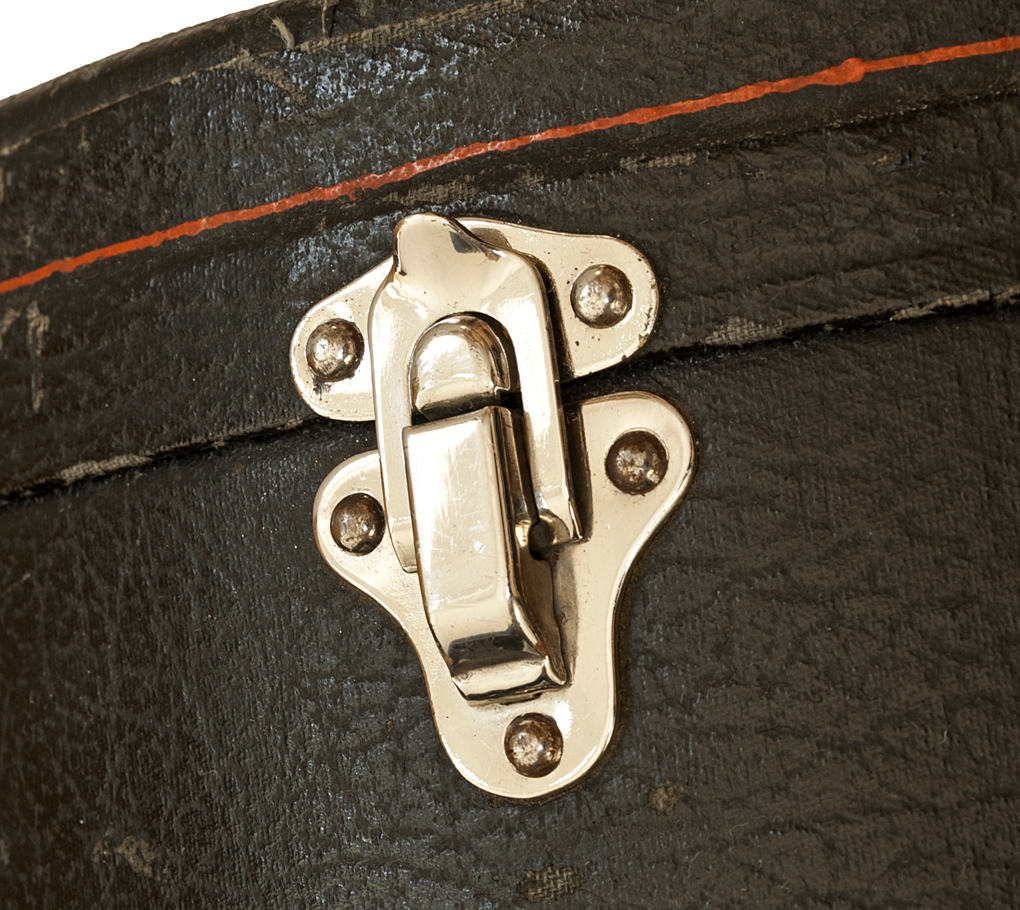
"G&S"
Short Top / 1 Piece Triangular Base
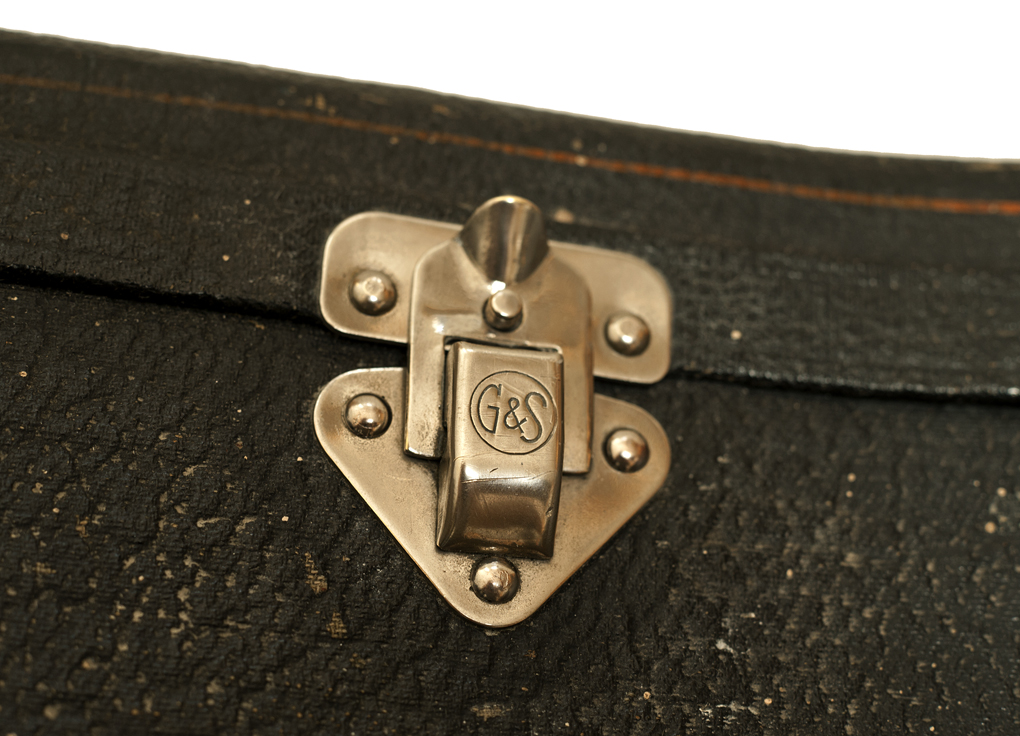
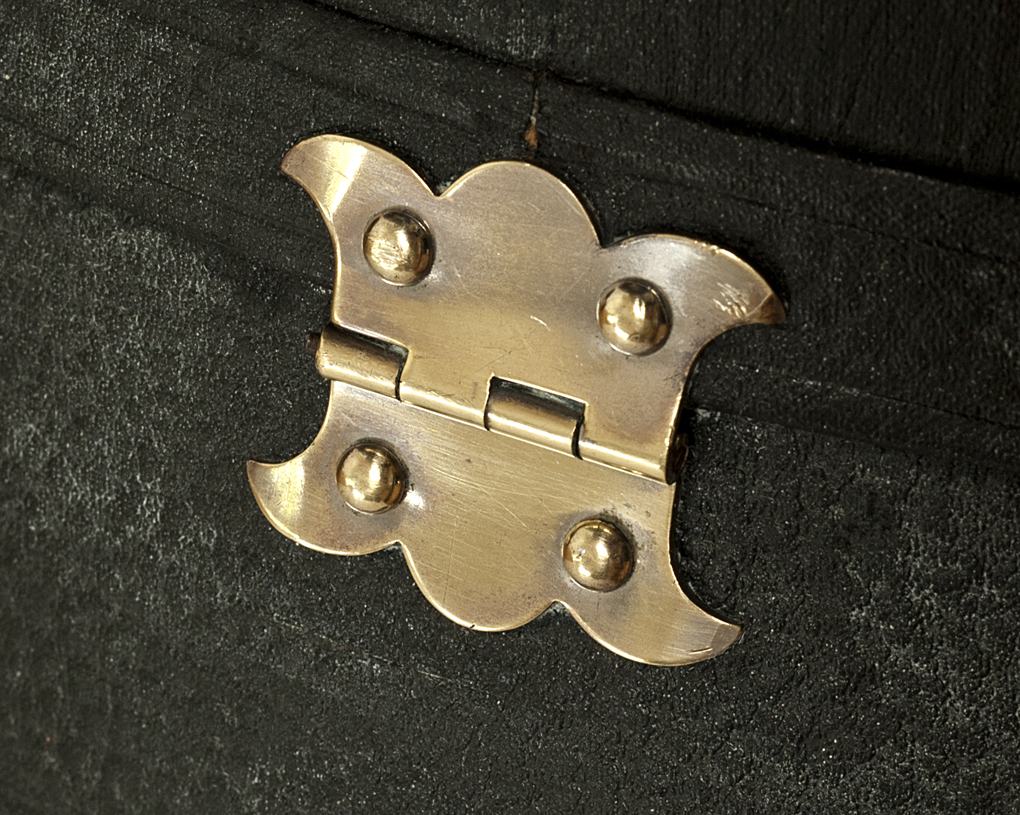
Martin / Harptone Cases
For most of the time since World War II, Martin guitars have been offered with a choice of hard and soft shell cases supplied to Martin by the Harptone Company.
Cases for Martin guitars were extremely expensive, with a hard shell case costing a good percentage of the price of a guitar. A hard shell Keratol plush lined case for a $50 000-18 in 1926 cost $30! That's 60% of the cost of the guitar. A cheaper flannel lined hardshell case cost $18, still 36% of the cost of the guitar. In 1938, a hardshell Keratol Rayon plush lined "D" Style case for a $65 D-18 cost $27! A Duvetyn felt lined "C" Style case cost $16.50. When I purchased my first Martin as a 14 year old in 1964, I was stretching to buy a Martin, and a hard shell case was an additional $54. So I purchased a soft shell case, which allowed me to put my money toward rosewood, rather than a mahogany guitar, which I am thankful for to this day. Of course, soft shell cases are not the most durable, and don't last long, so a few years later I invested in a hard shell case.
So it's easy to understand why many are seen today with aftermarket hard shell cases that were manufactured in later years than the guitars.
Here's the tag that came with the hard shell Martin case I purchased for my 00-21NY in the late 1960's, proving that Martin did indeed sell cases of their own:
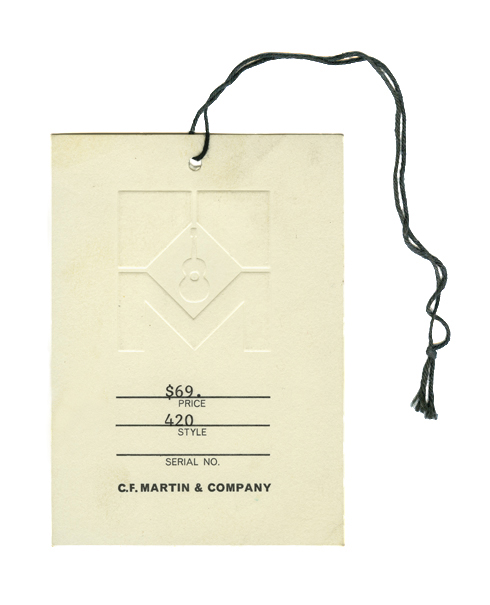
Early '60's Harptone case for Martin 00-21NY

Late '60's Harptone case for Martin 00-21NY
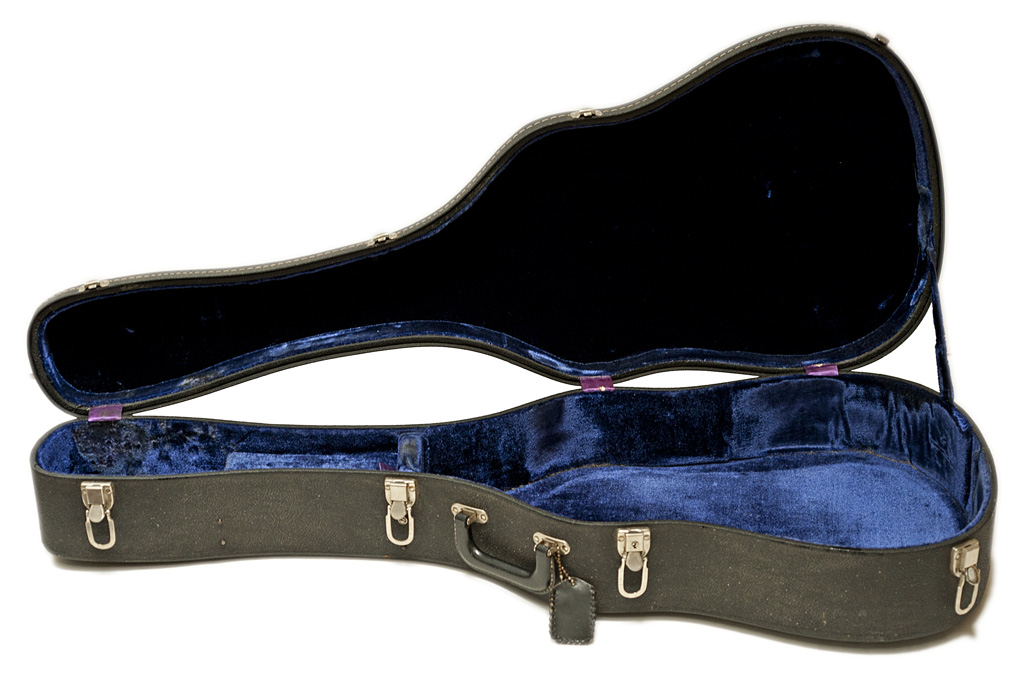
Harptone case with 1965 Martin D-35
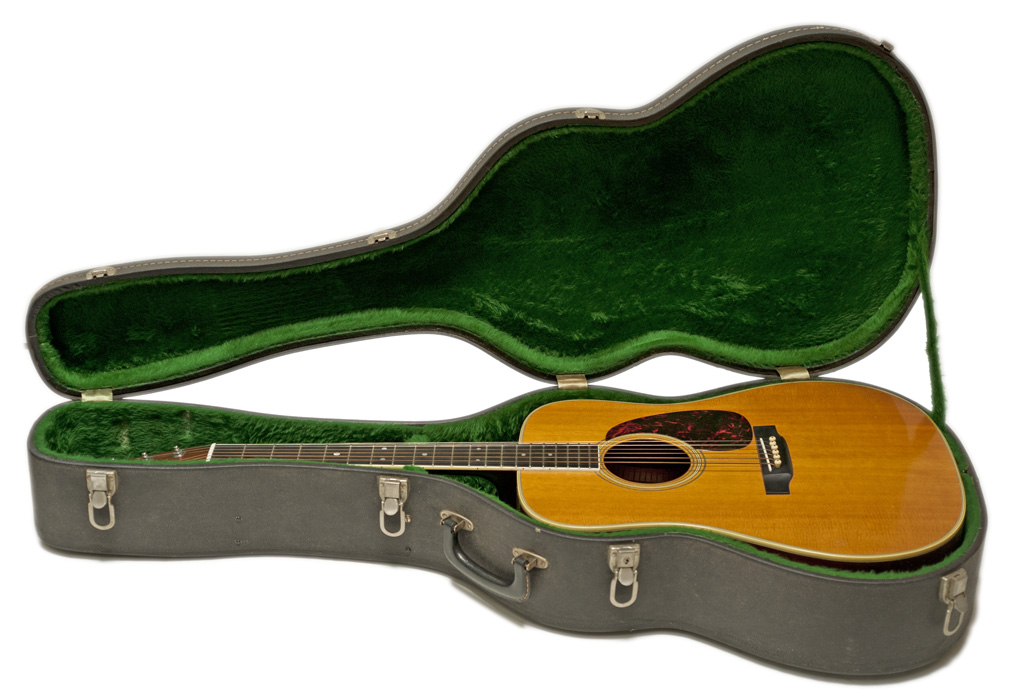
Here's a copy of the Martin price list of 1965, showing prices for the various cases offered:
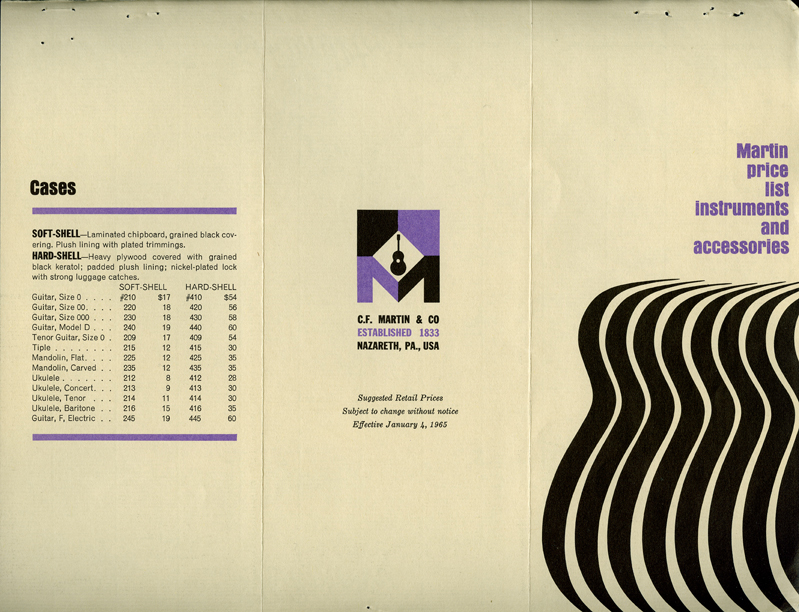
Martin Lifton Cases
Martin has occasionally paired Lifton case with certain models, such as this 1962 000-28C and 1966 D-12-20
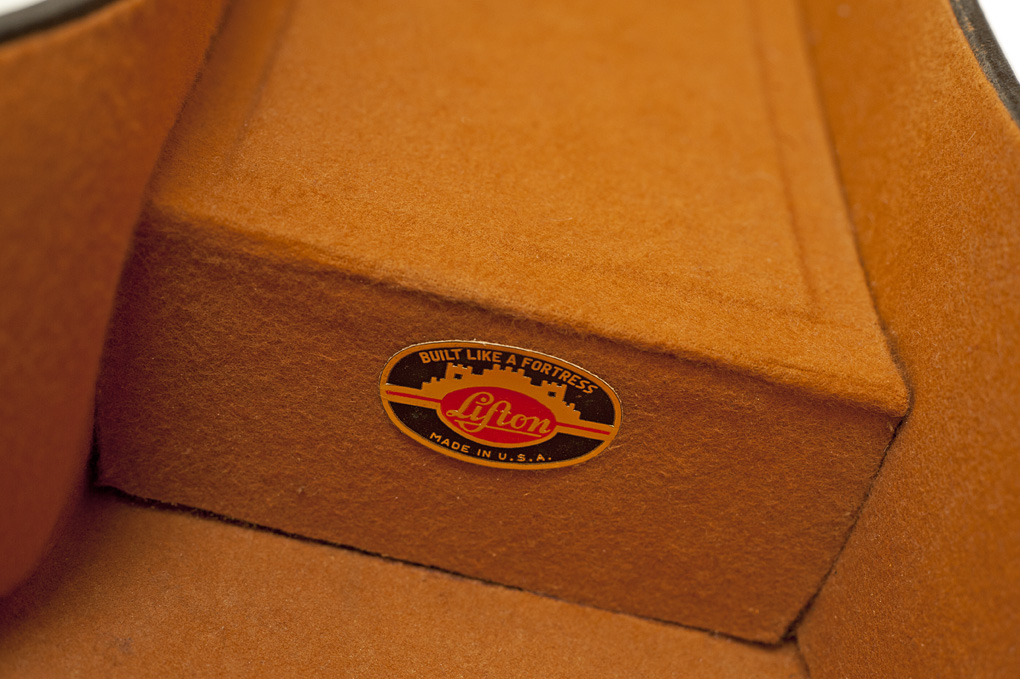
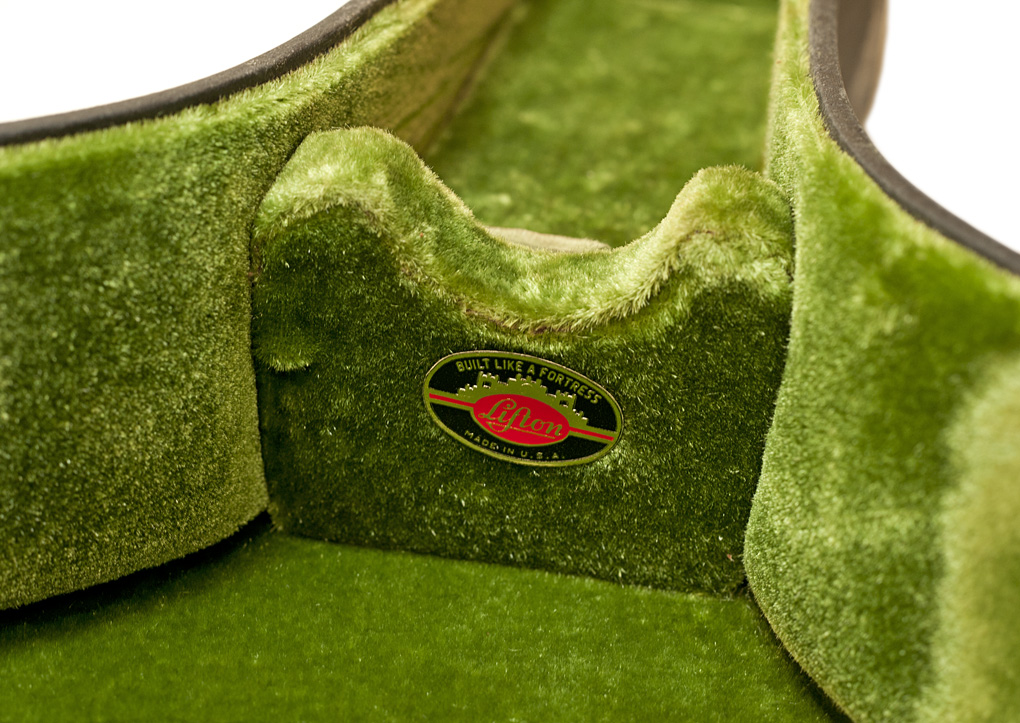
Martin Thermoplastic Cases
Martin introduced molded thermoplastic cases in 1971. In late 1972, at the same time Martin's lifetime warranty was replaced with a 5 year warranty, the company began including the case in the purchase price of the guitar for the first time since Martin guitars were shipped in coffin cases.
These cases were often referred to as "steal me" cases, as the prominently displayed Martin logo advertised the contents as being a valuable guitar.
The first version of the thermoplastic case had a Wedgewood blue exterior and deep blue interior.
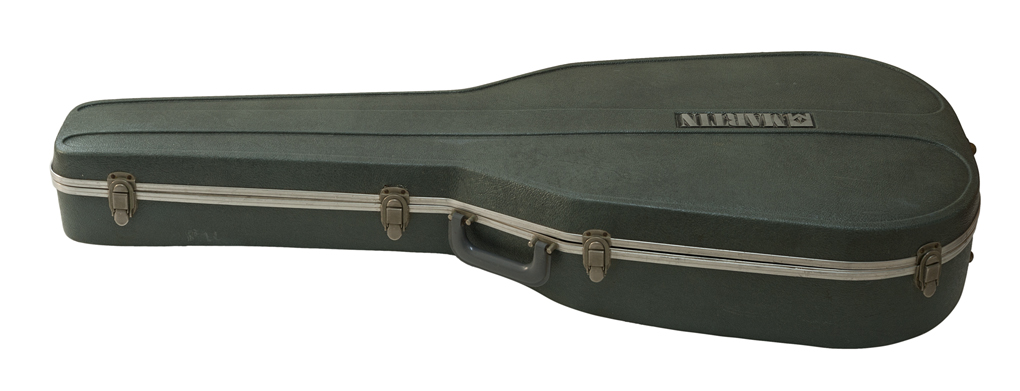
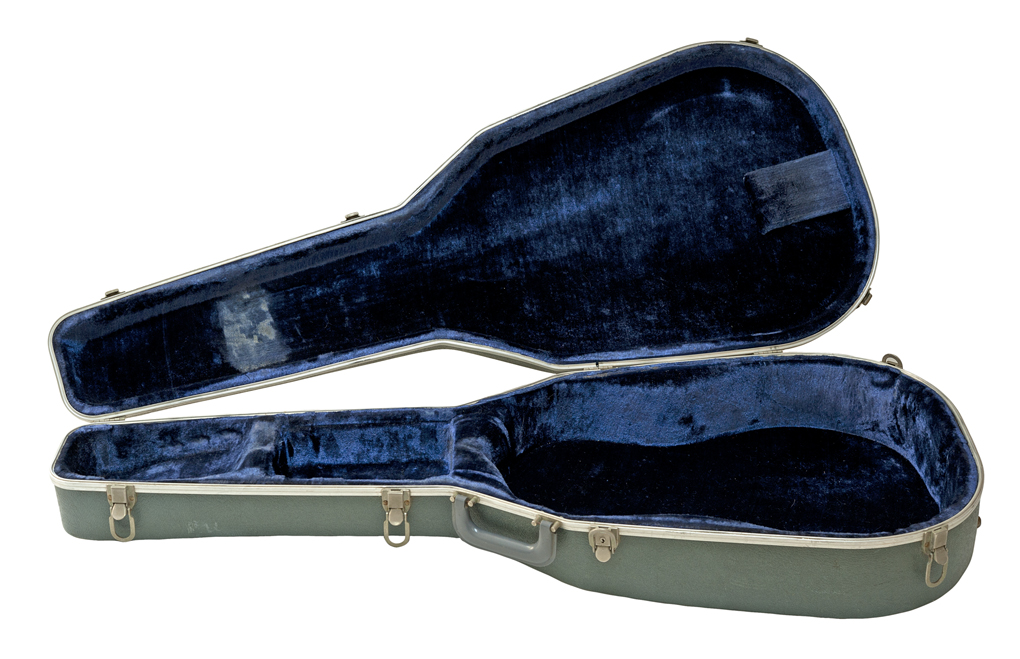
Within a couple of years, the blue case adopted a rust colored lining, and then for much of the 1980's, Martin's thermoplastic cases were made with a black exterior and rust colored lining.
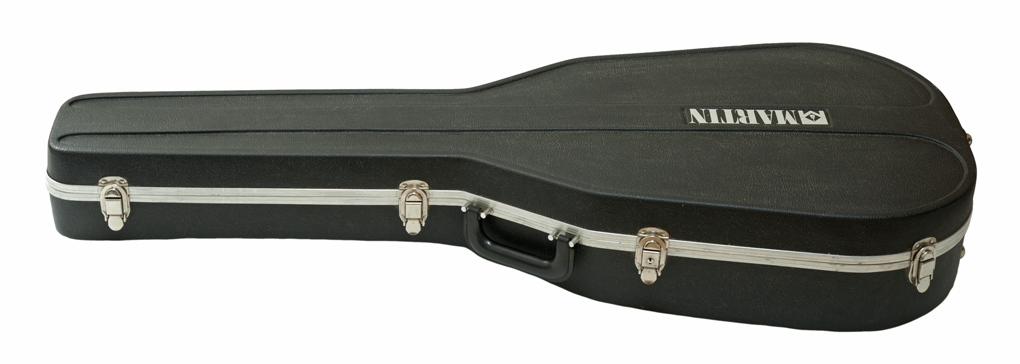
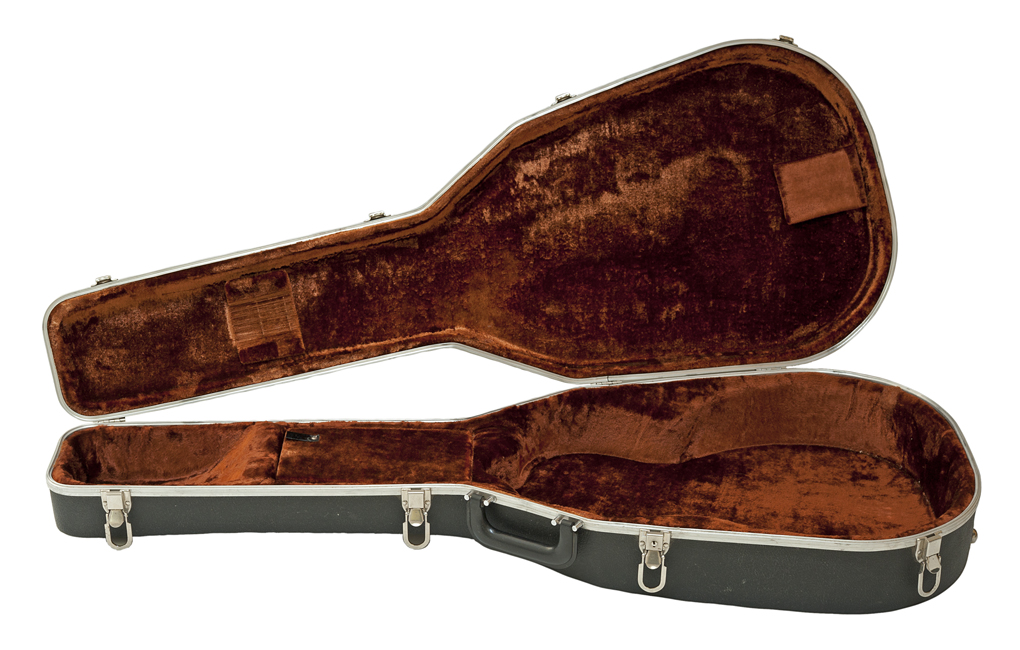
In the late 1980's, and through the 1990's, an integrated Martin logo engraved into the case lid replaced the attached logo plates which had formed a habit of coming unglued.
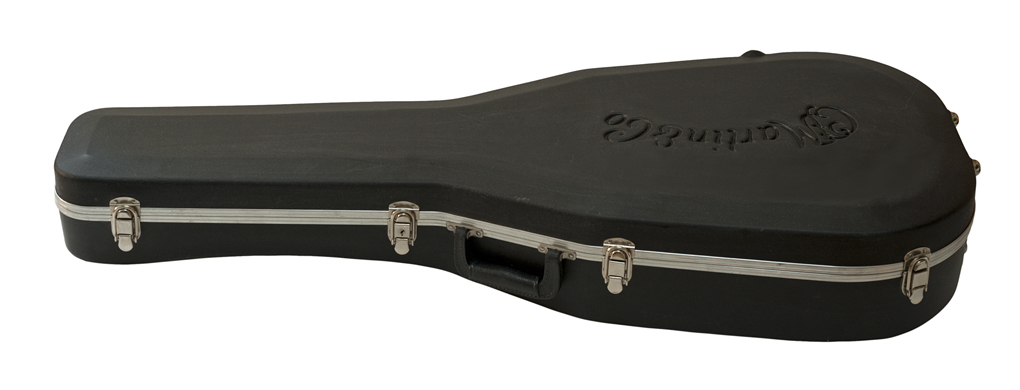
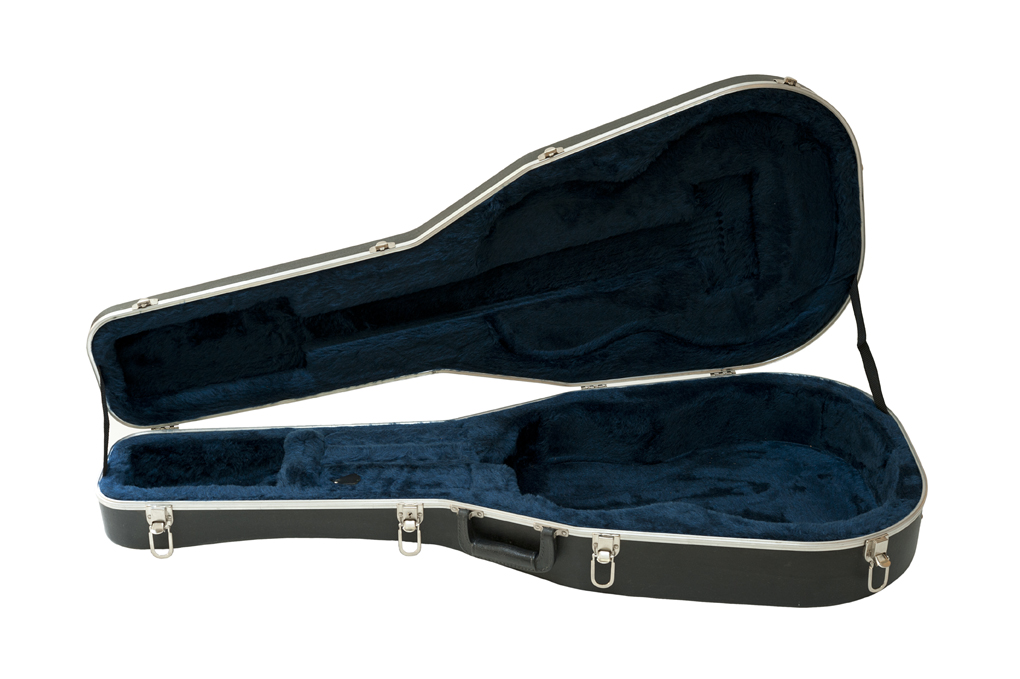
Martin Price Lists
Most hard shell cases used by Martin beginning around 1920 are stamped with the symbol of the bull with the letters "FF", for the Felsberg Company, the second iteration of what would later become the Harptone Company, with the letters "B&C" in 1928.
Martin price lists through 1926 do not include a "case or bag"...
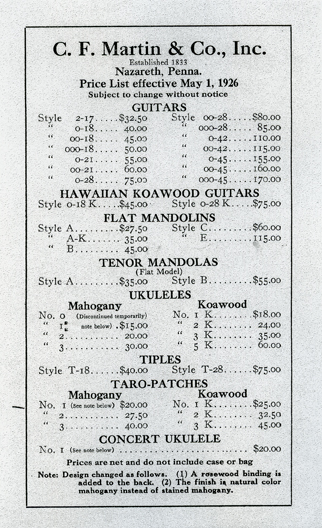
Beginning in the late 1920's, price lists included four styles of cases, including the canvas "end loader"...
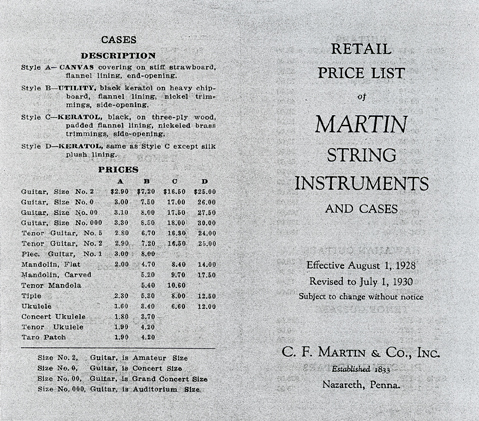
In the late '30's, the canvas case was no longer offered, and the materials changed...
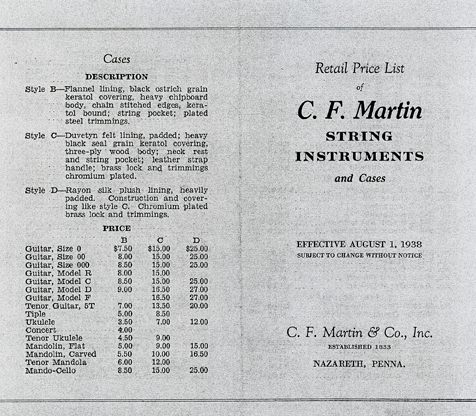
vintagemartin.com
To See Robert Corwin's Classic
Photography of Folk and Roots Musicians, visit: